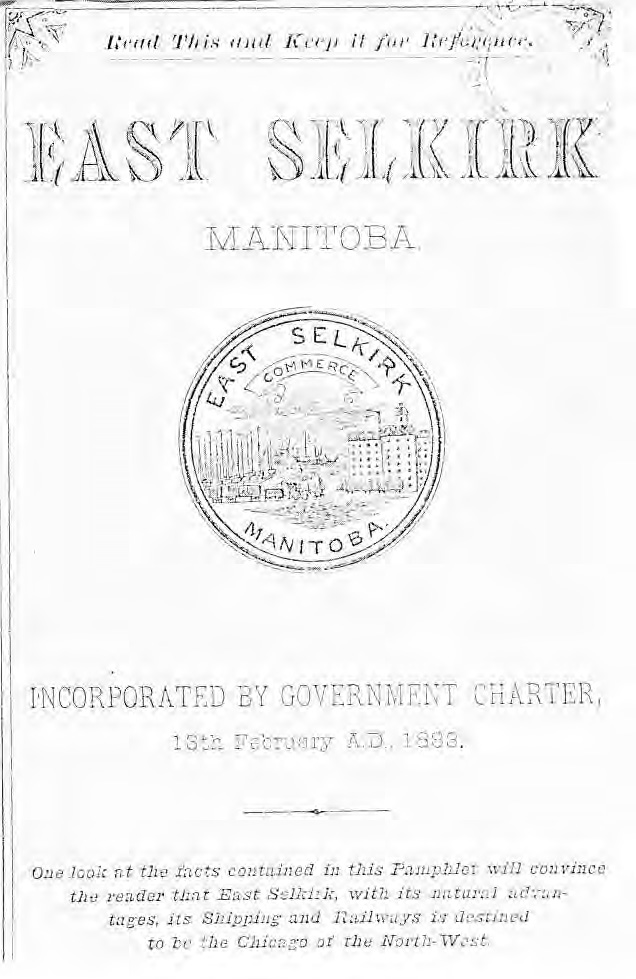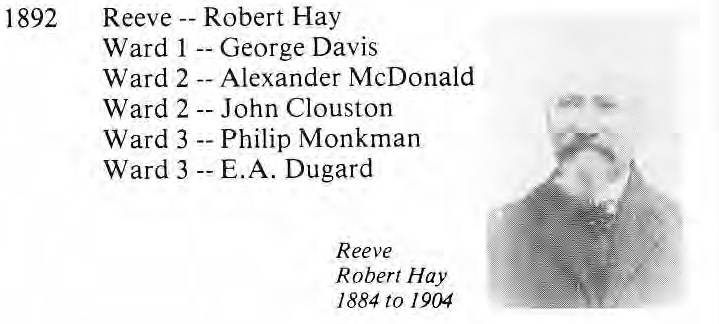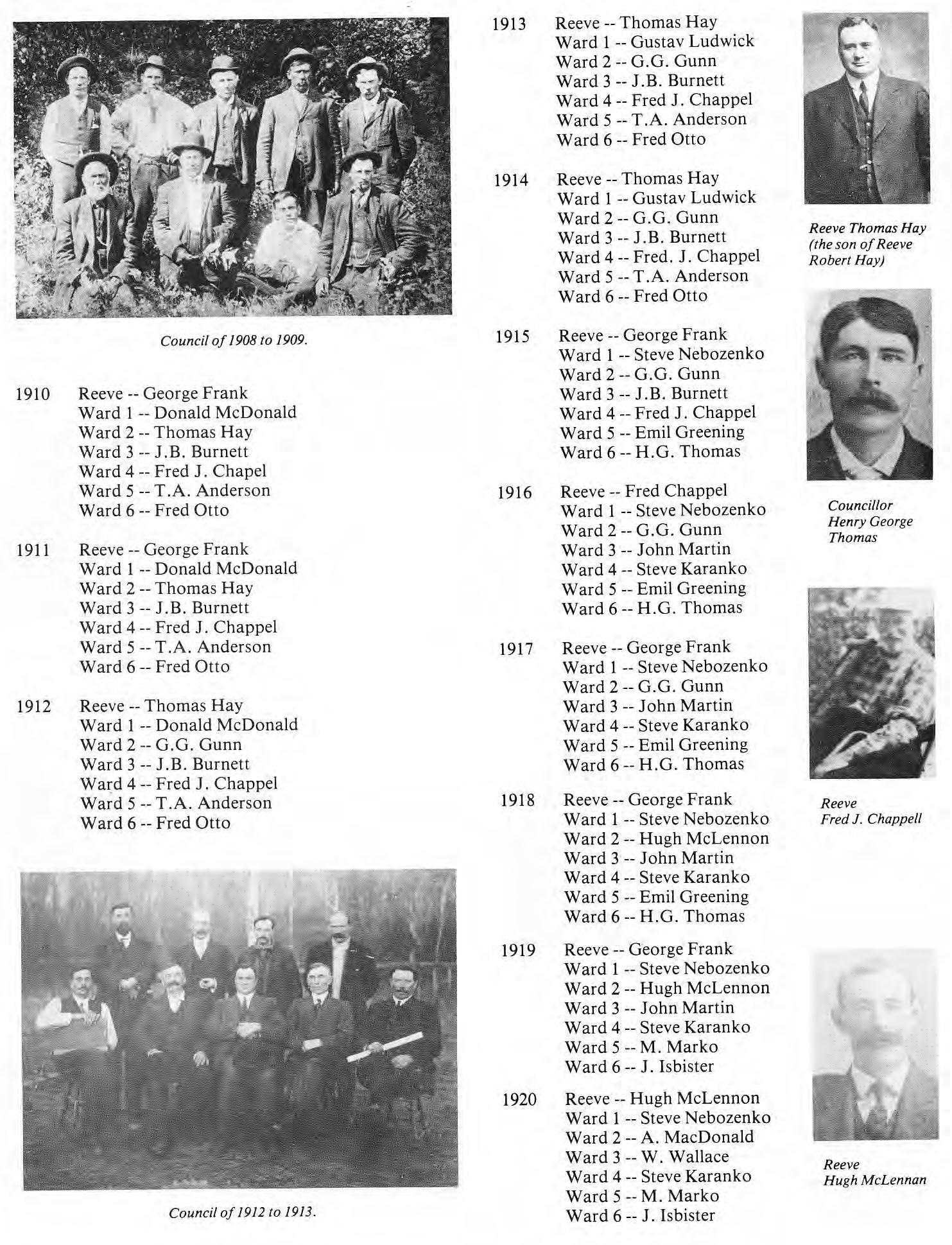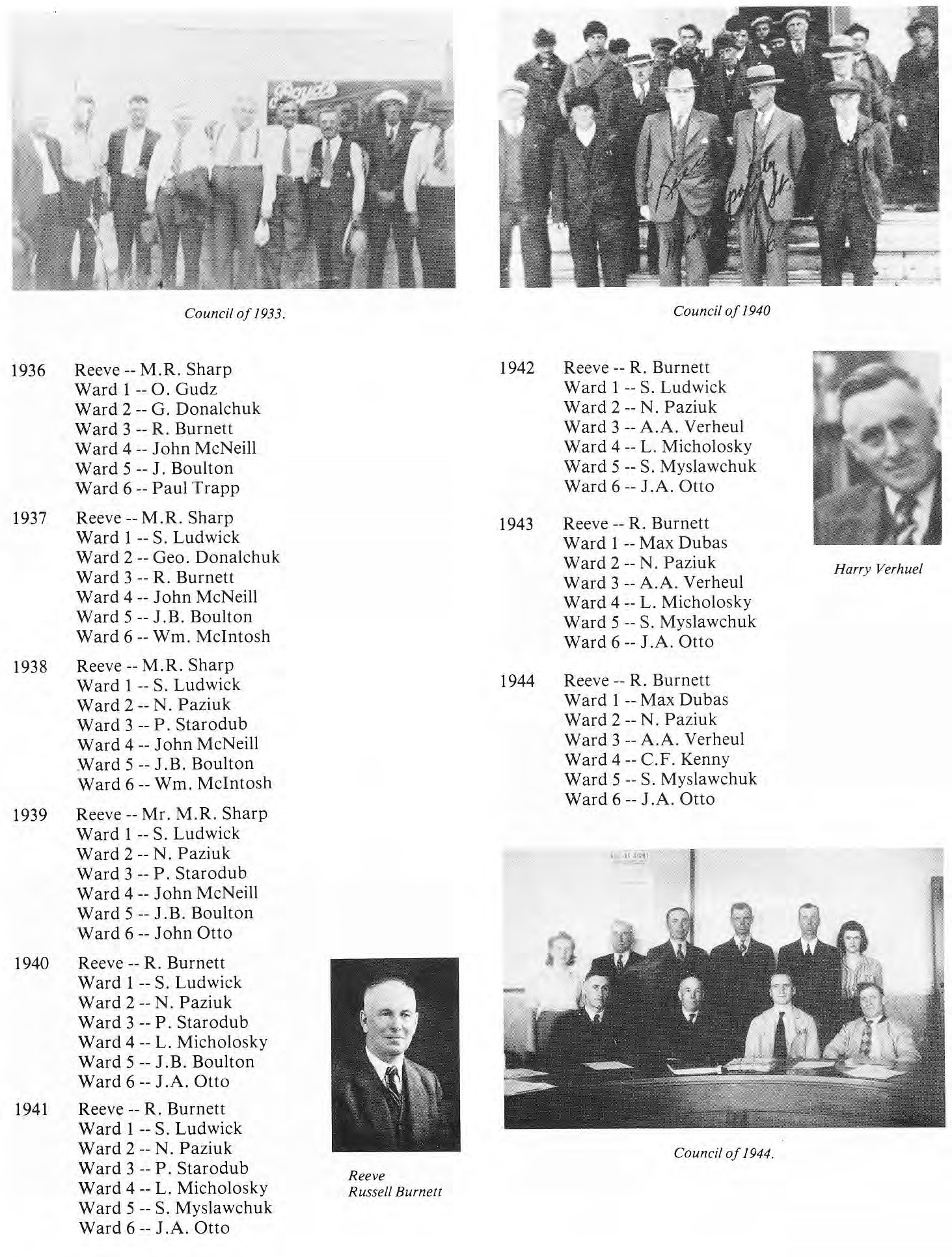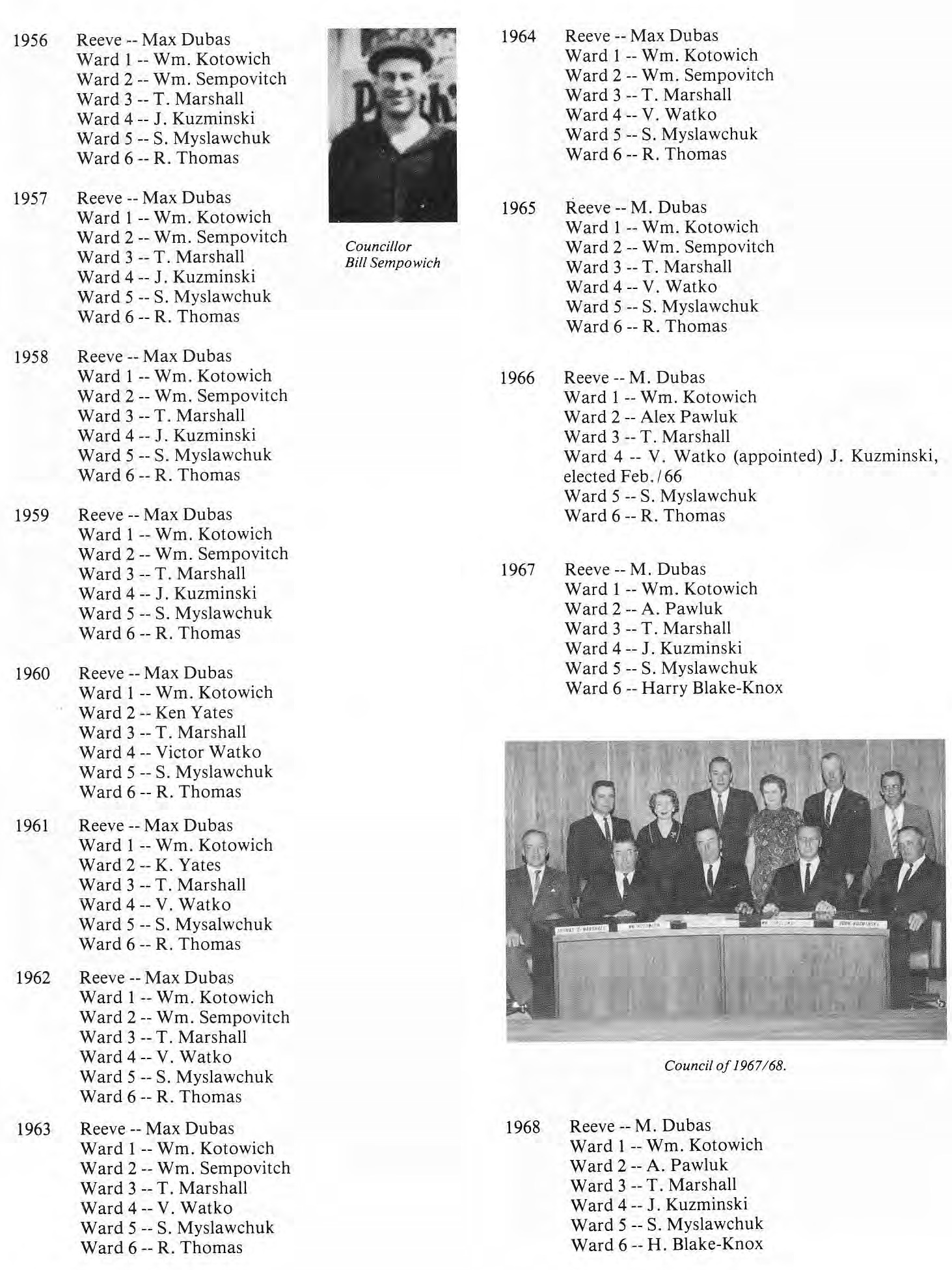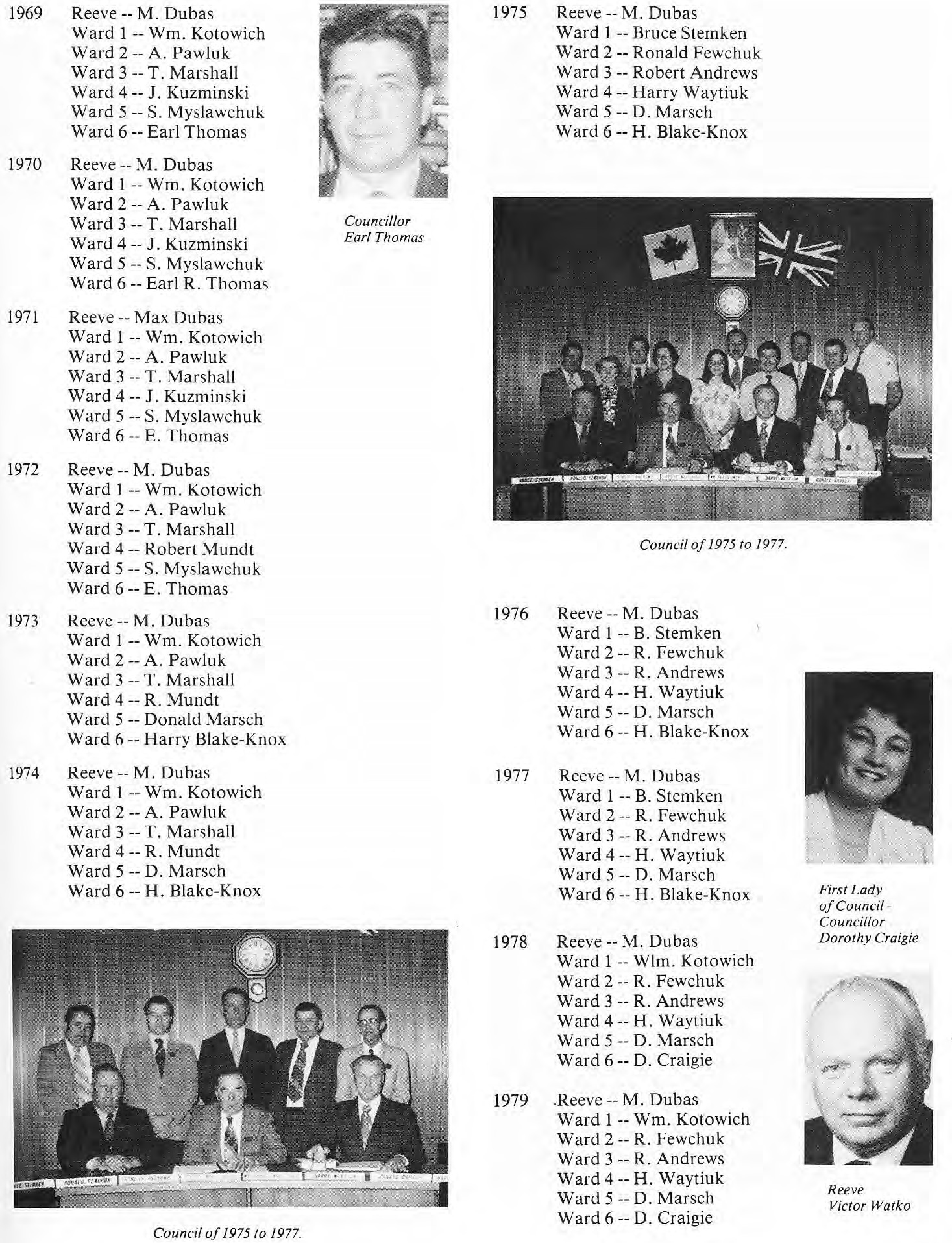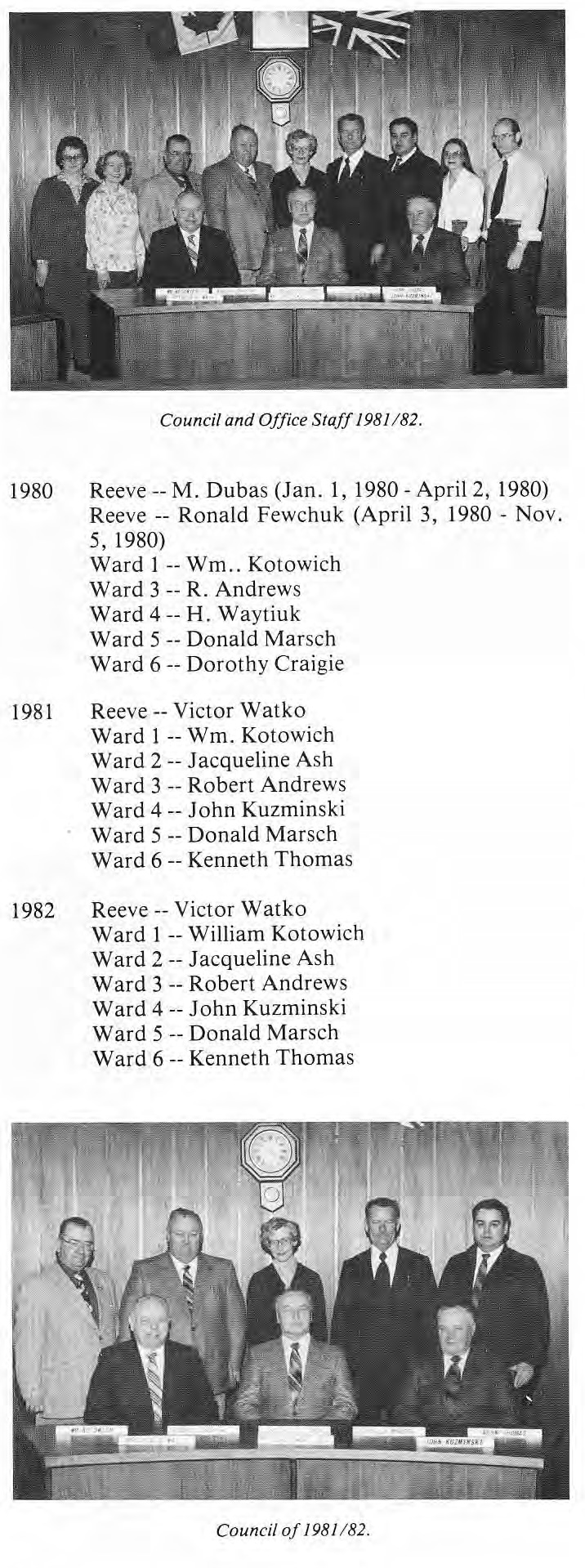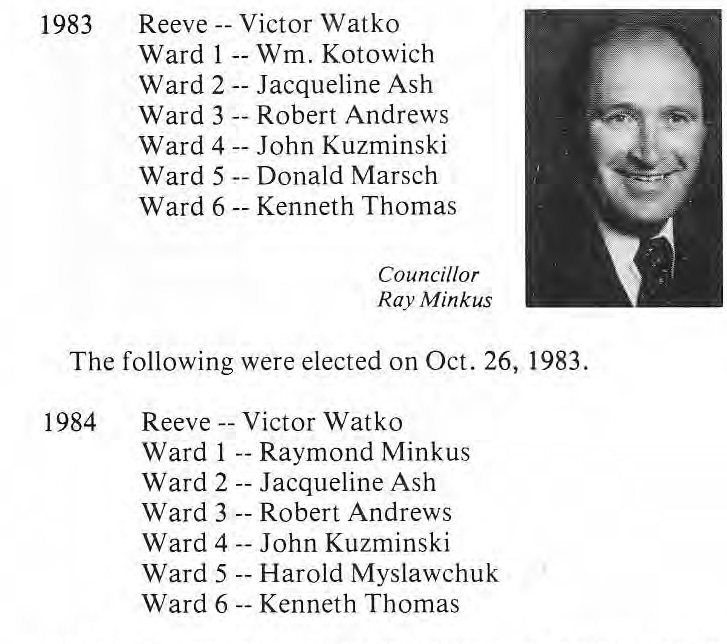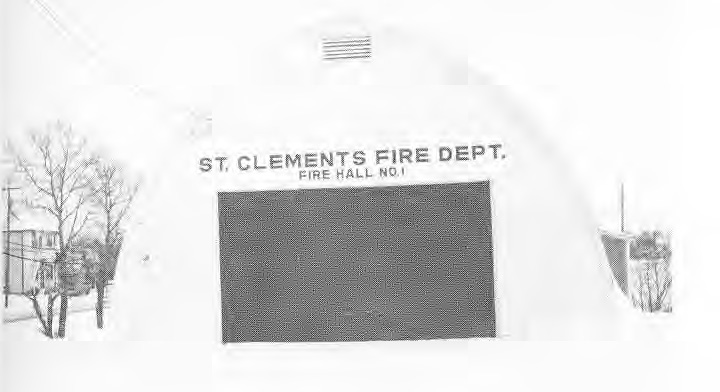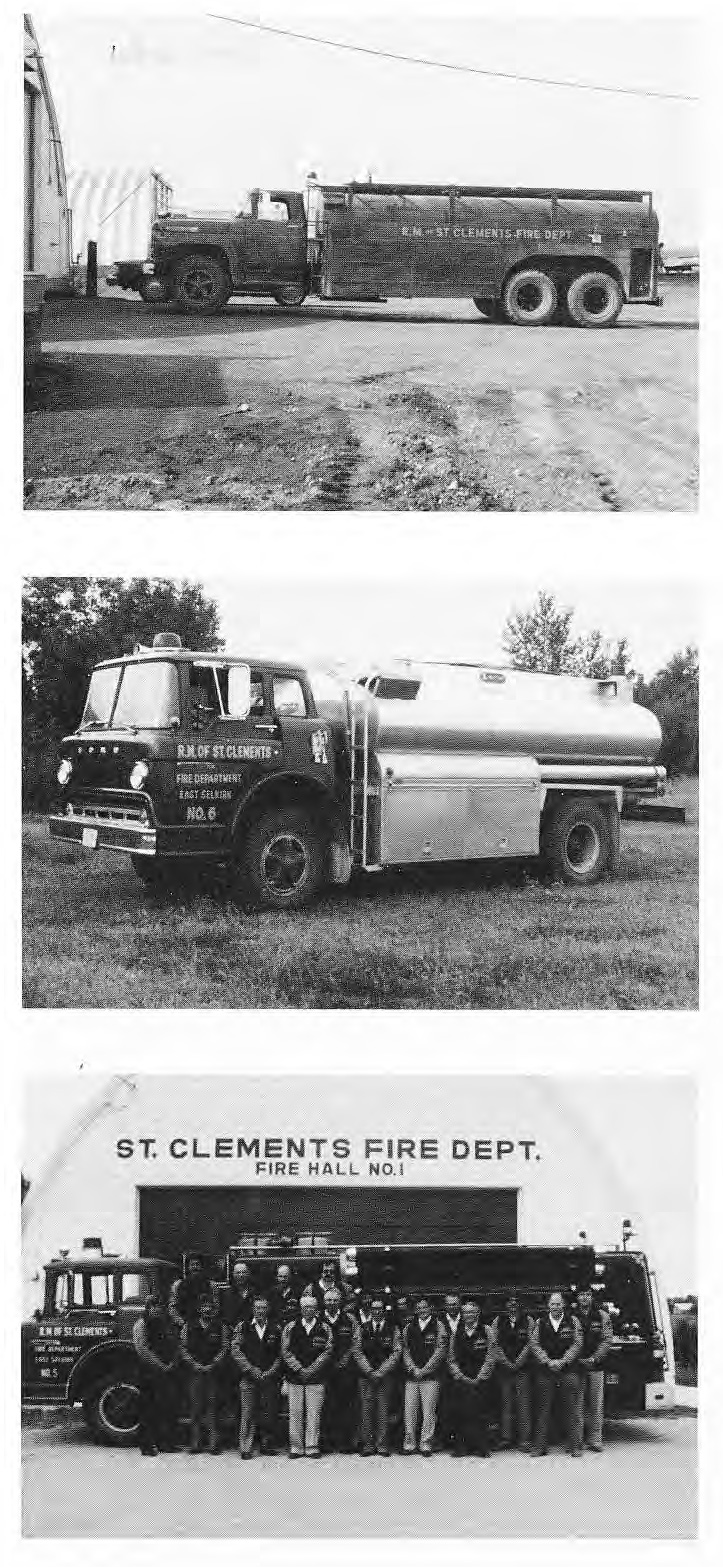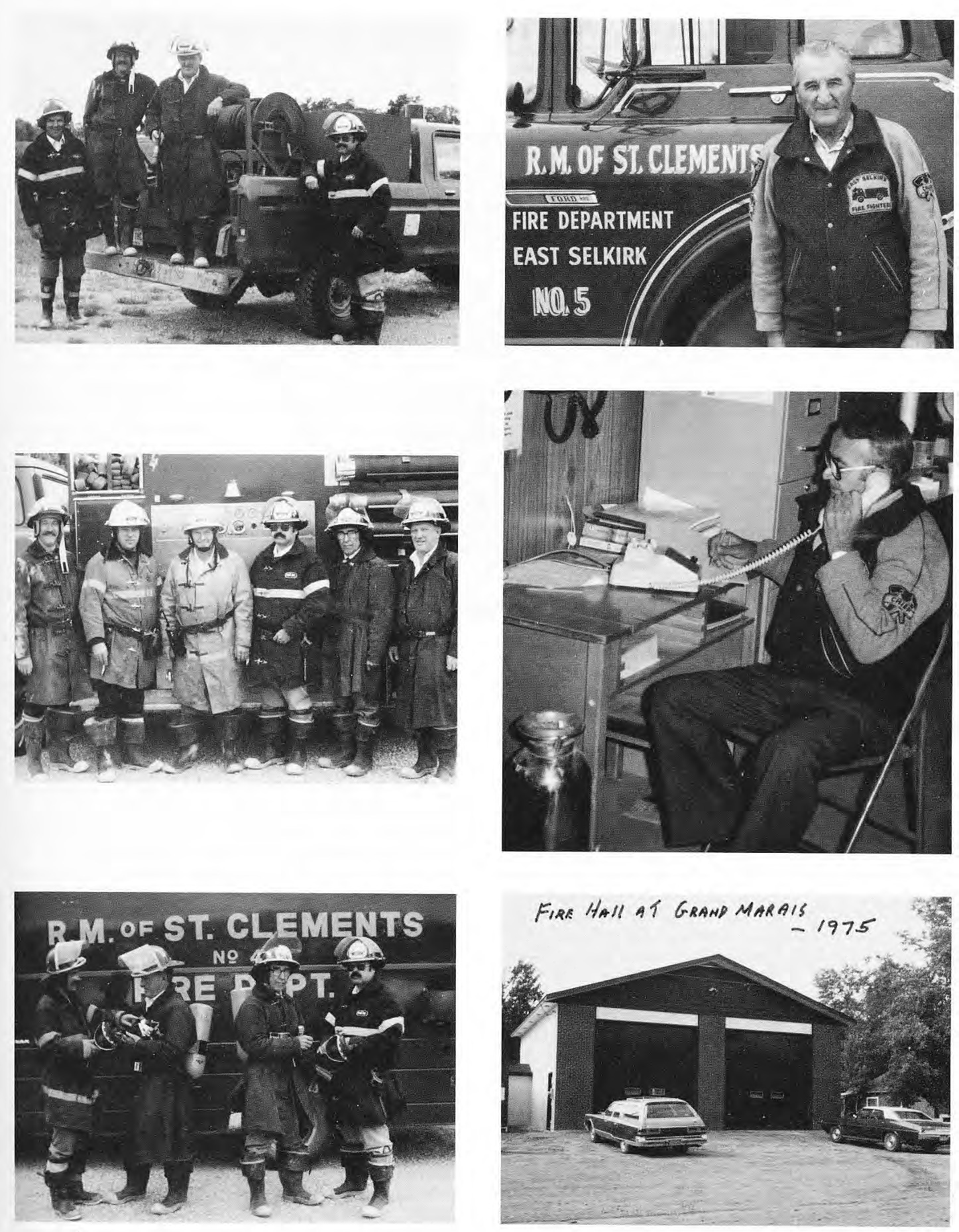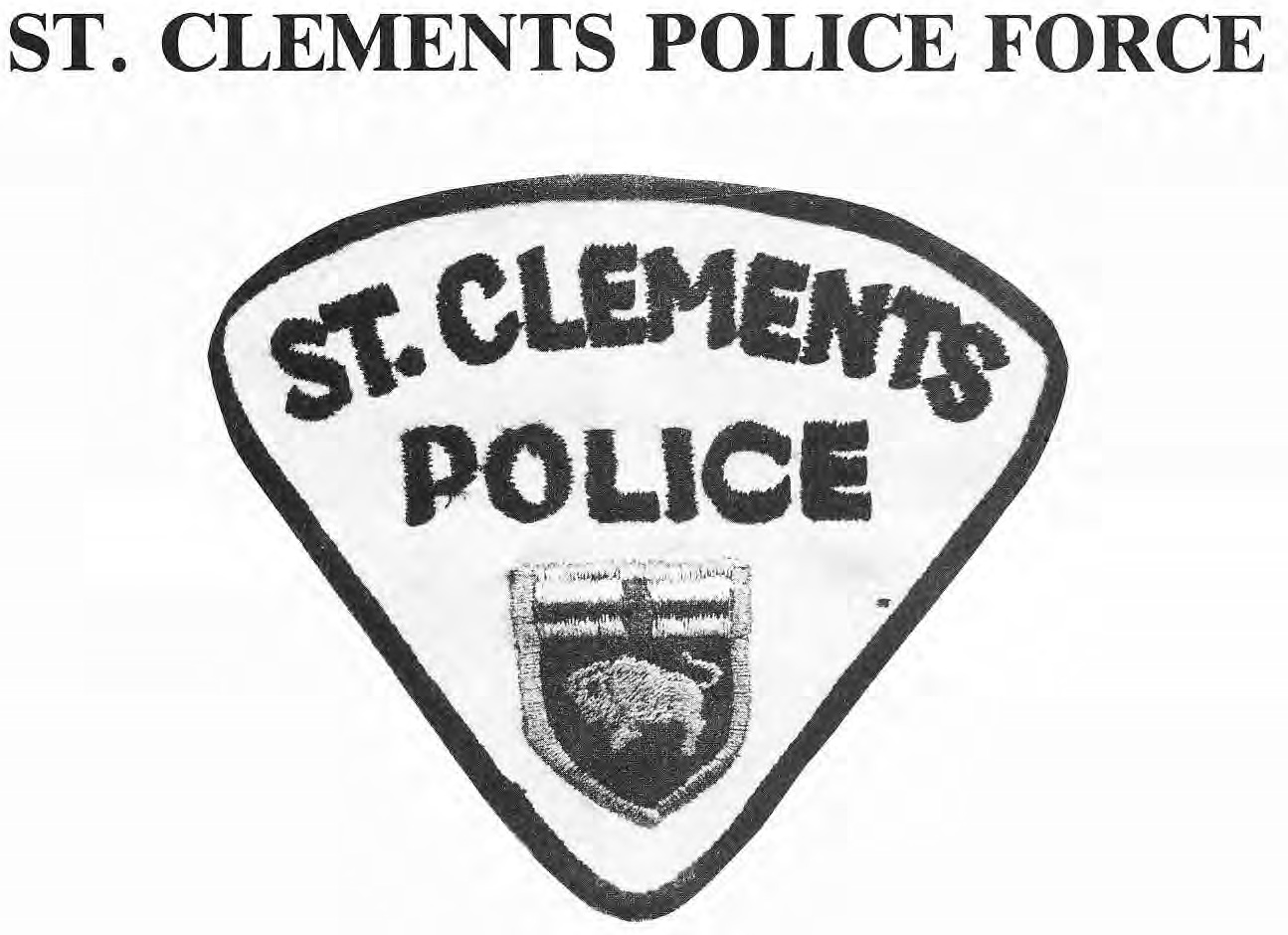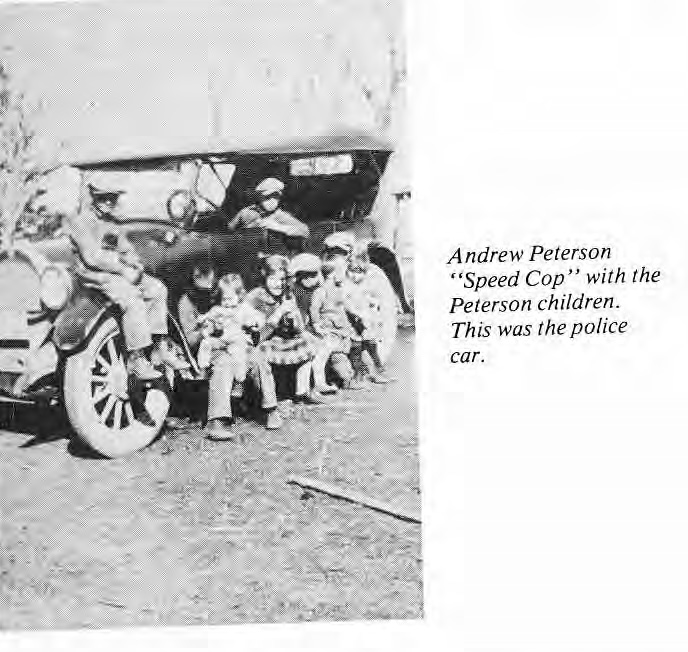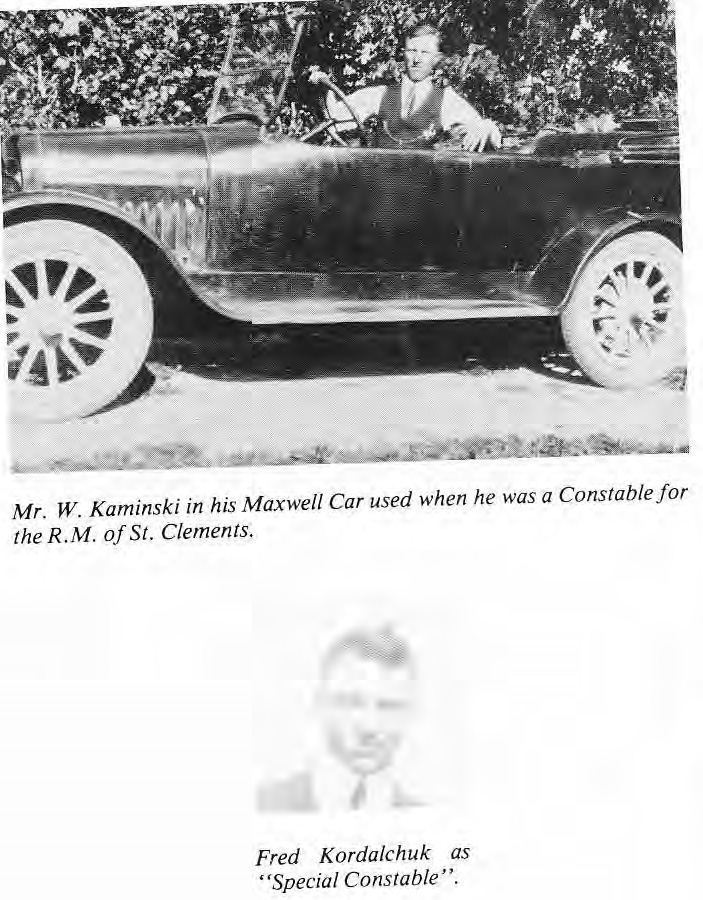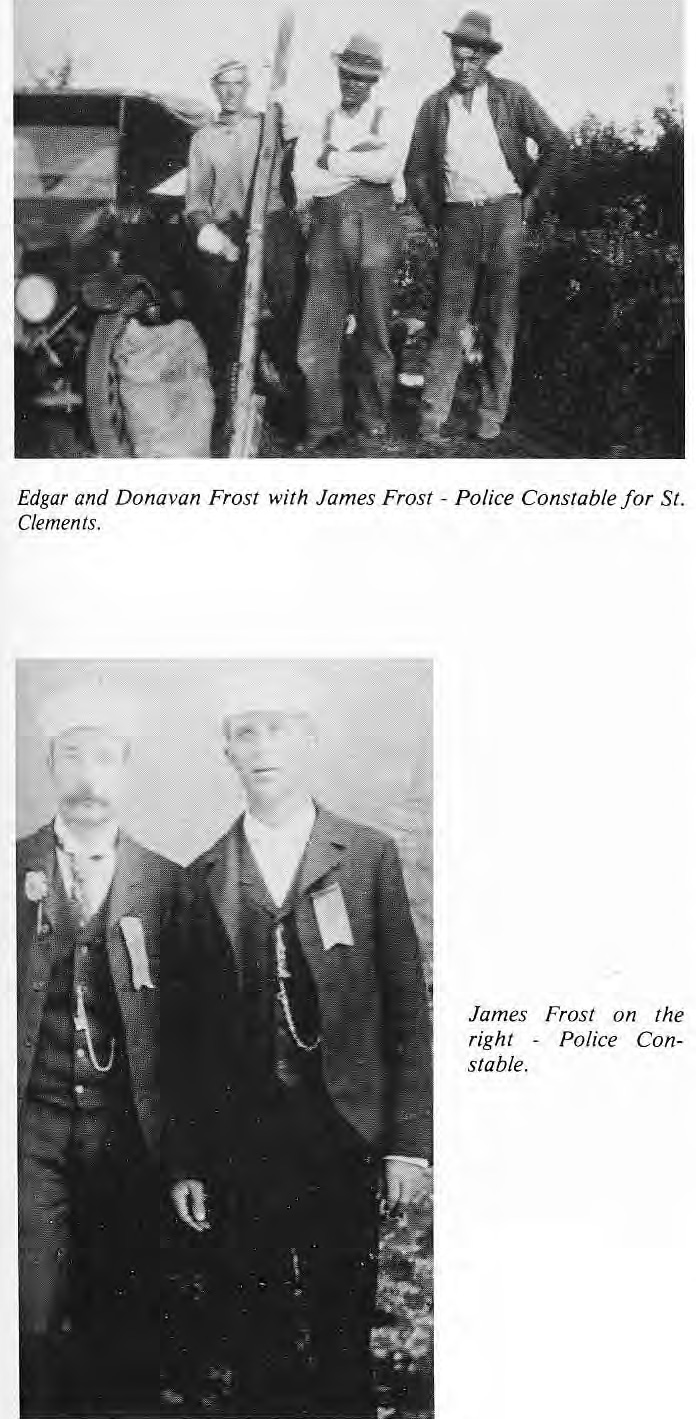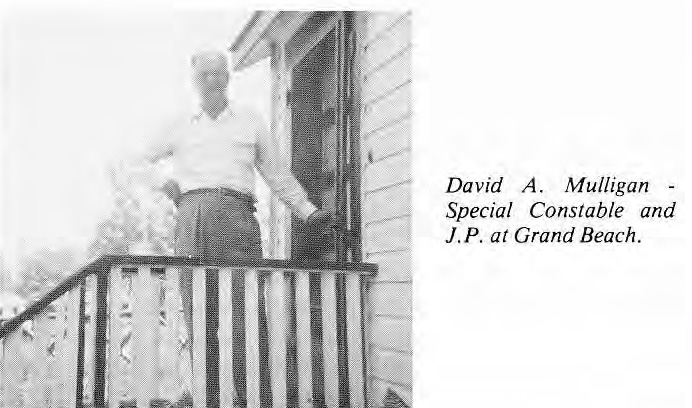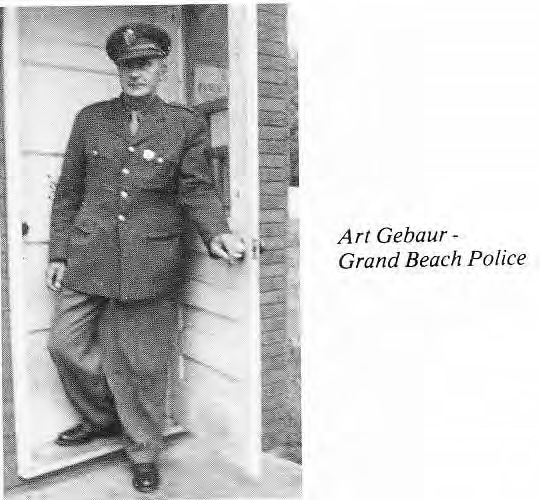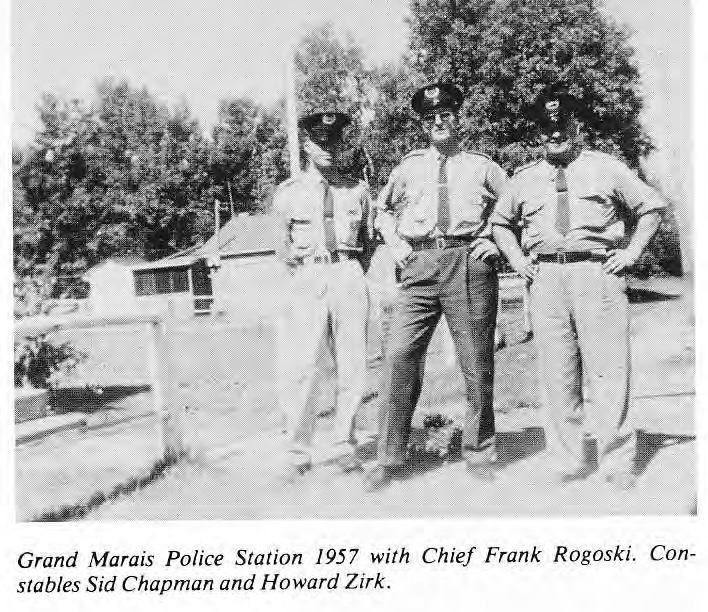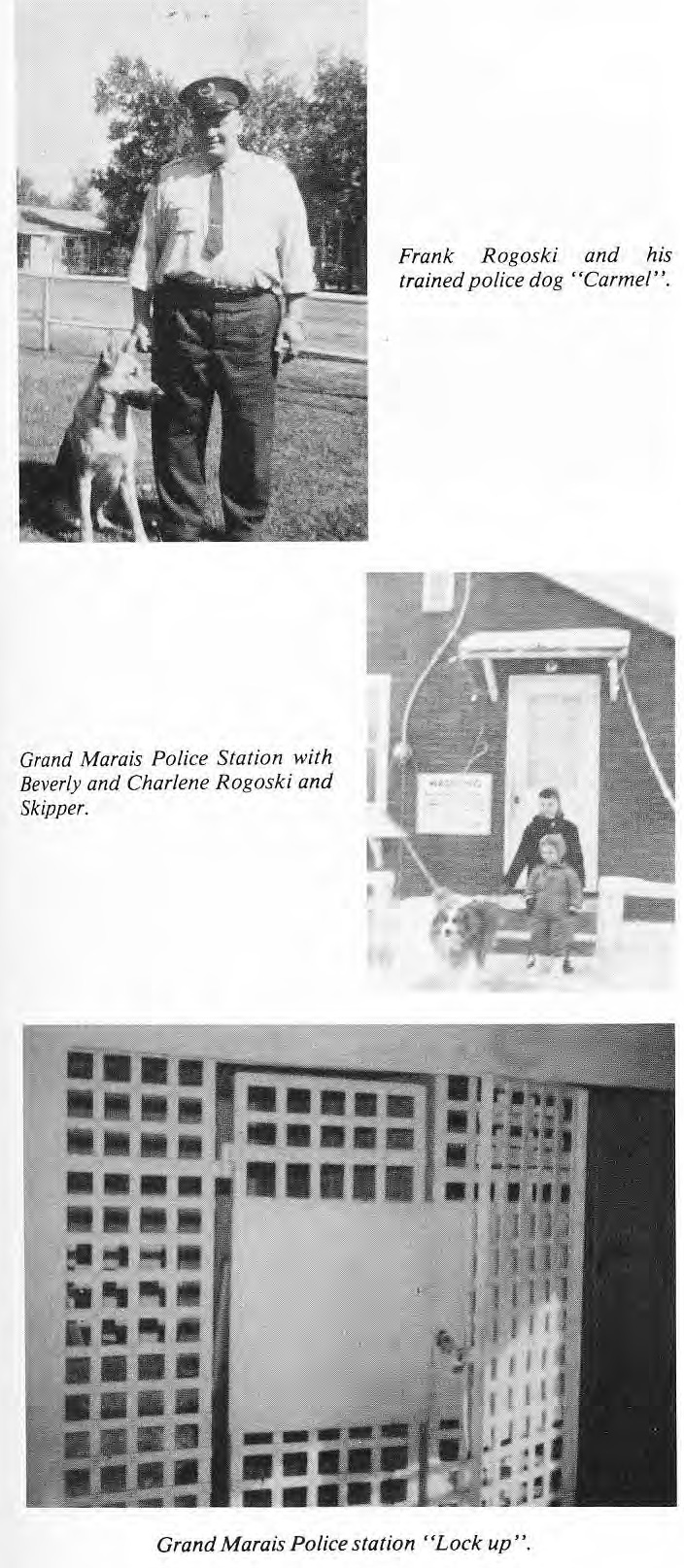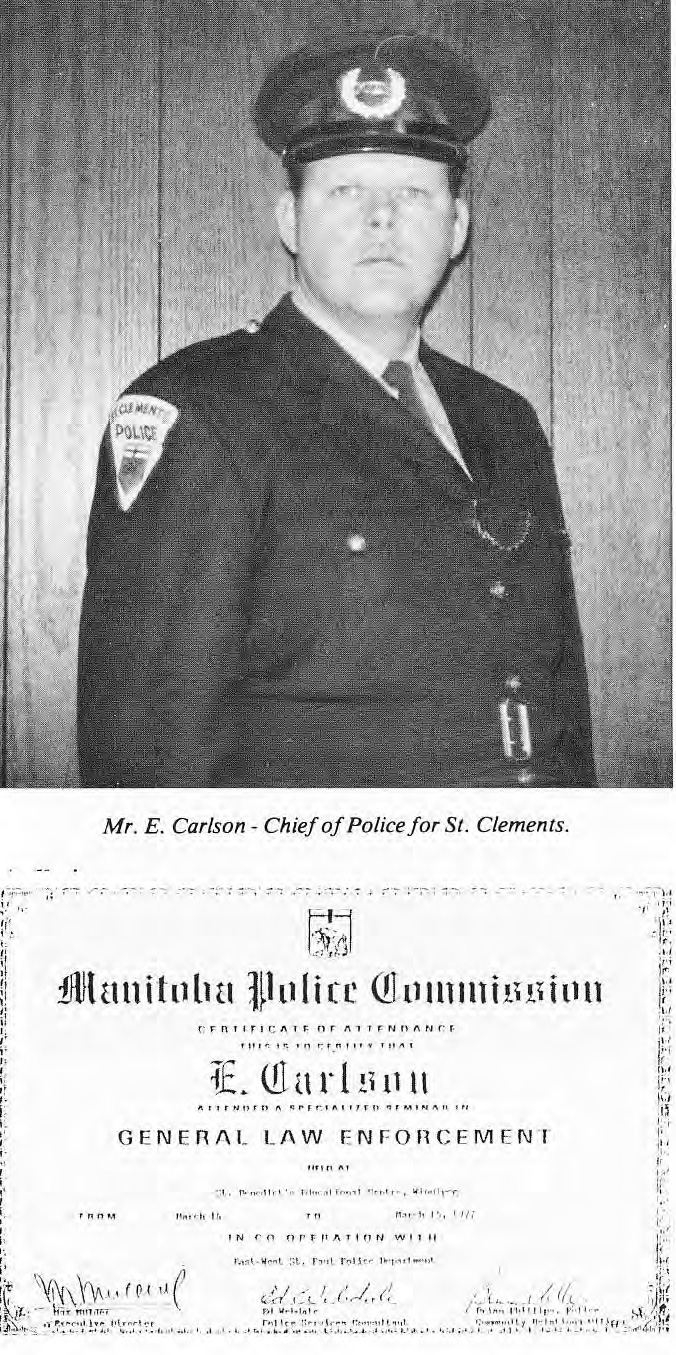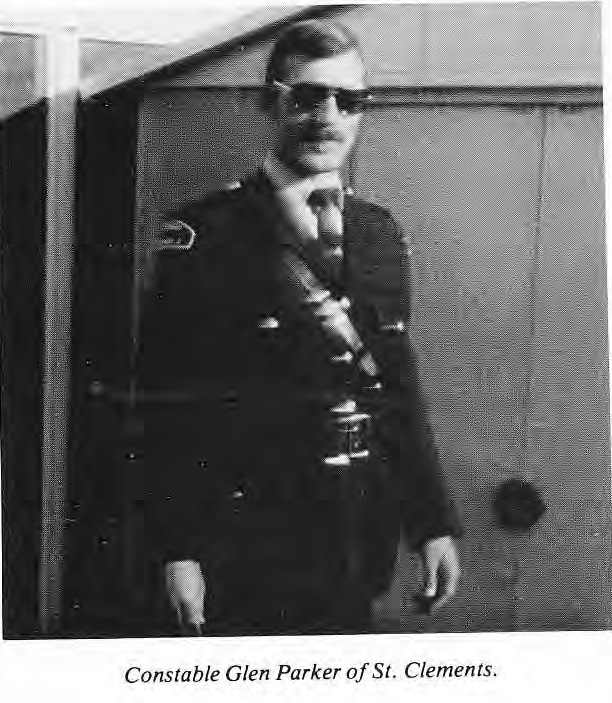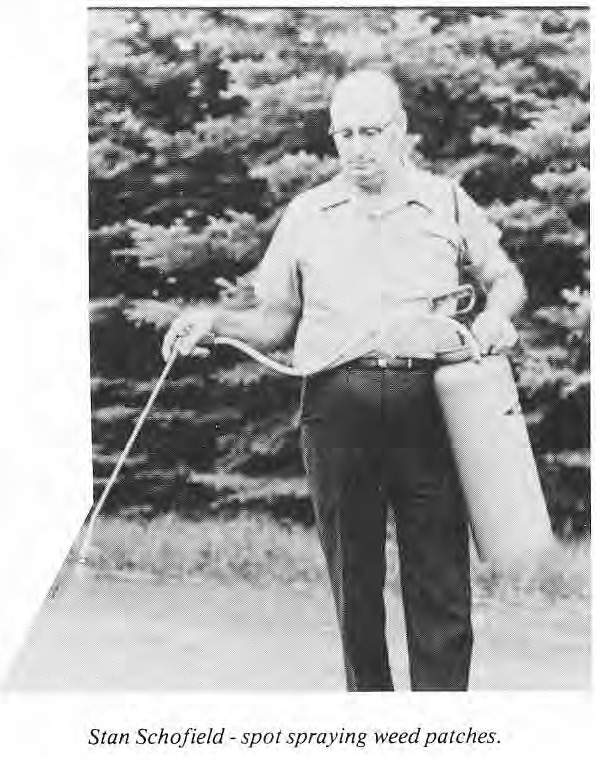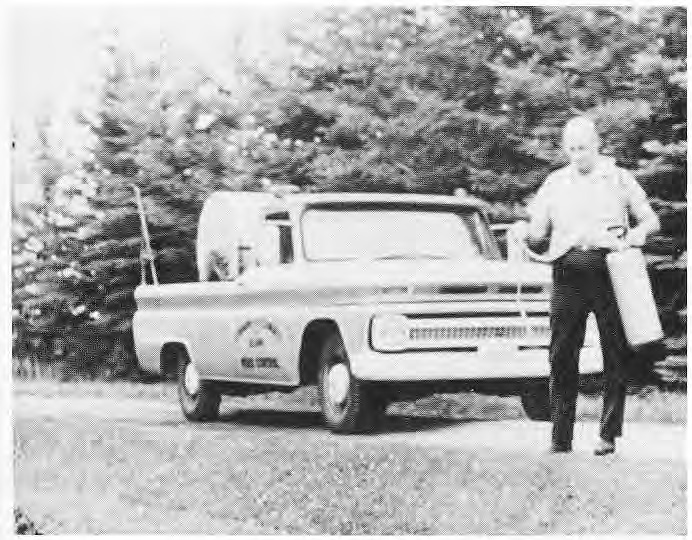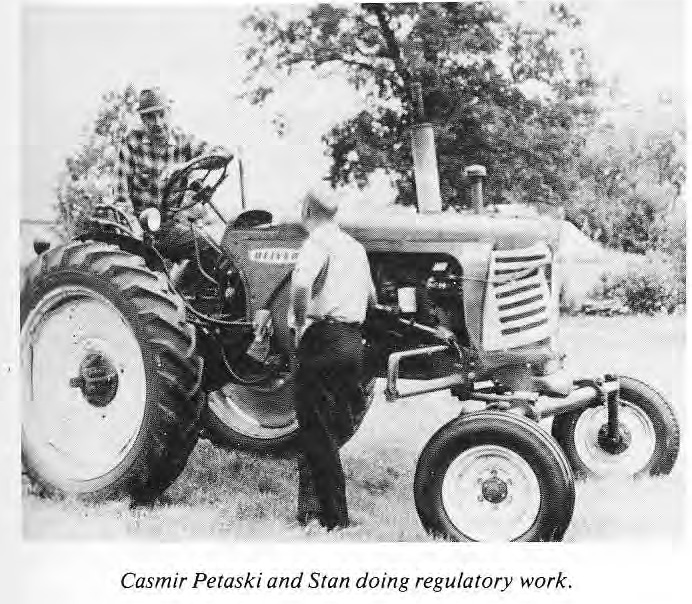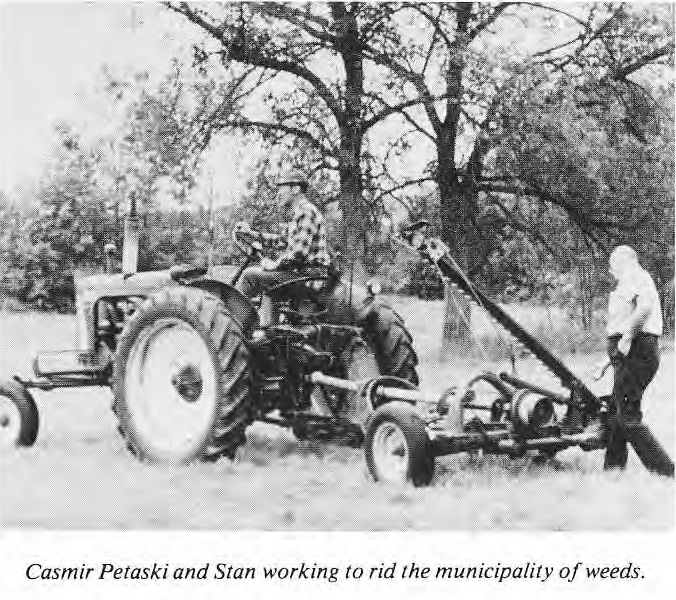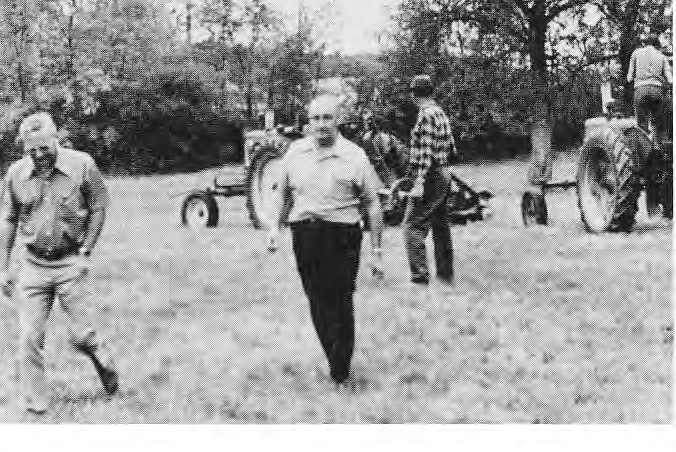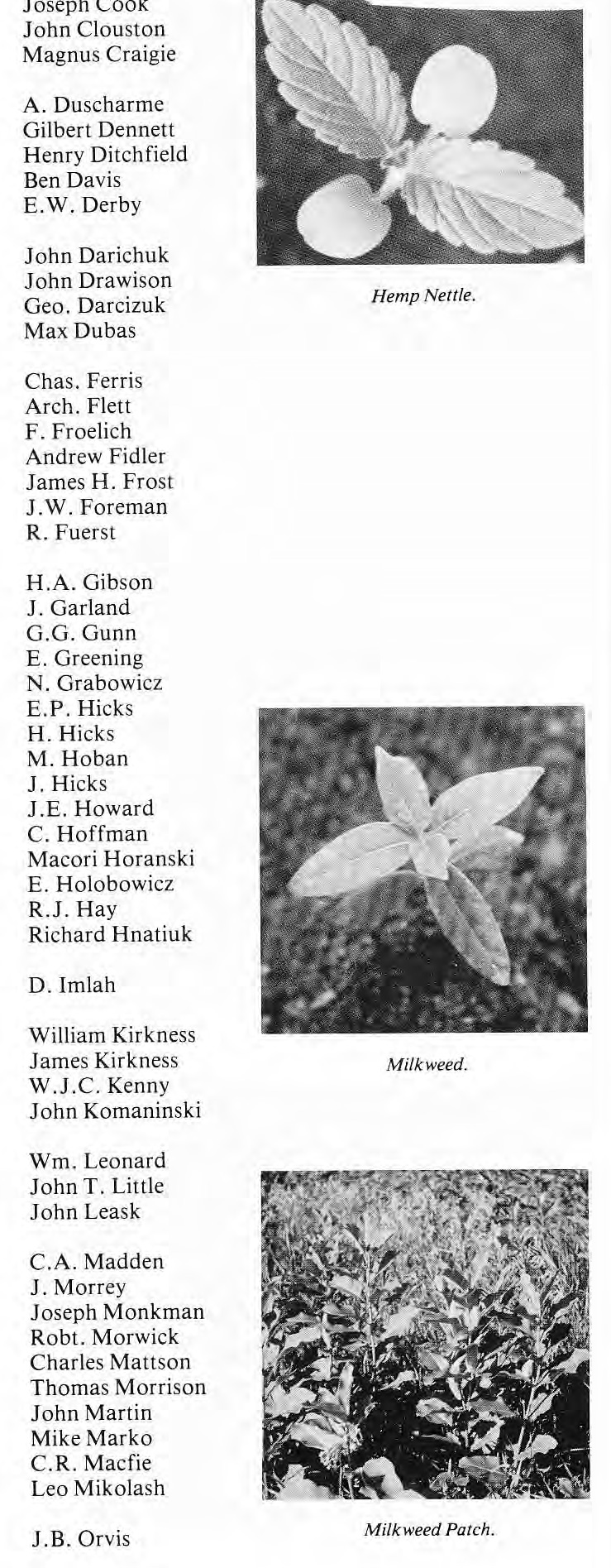It can safety be said that we, on the east side of the Red River, lying in the area now known as the Rural Municipality of St. Clements, had for our first local government, the old Governor and Council of the District of Assiniboia. This government was basically municipal in administration. Our local parishes of St. Andrews on the Red (1829) and St. Peters, were considered very municipal in nature, as was our St. Clements Parish, the last pre-confederation parish to form in 1861. The next local administration we fell under was the parishioner unit called by Louis Riel when he set up the provisional government in Nov. 1869. We were, under the provisional government, to be well represented by a local delegate (Thos. Bunn) and what was proposed was both representative and responsible. The local parish was considered an appropriate unit on which a municipal scheme could well be based. By 1870 there were about 20 of these parishes found mainly along the Red and Assiniboine Rivers. The parishes had been organized for religious and educational purpose and were divided between the two main sects: Anglican and Roman Catholics. Alex Begg, in his history of the Northwest, stated that the 12 Councilors were chosen by virtue of “position, influence, wealth, and intelligence” thus representation on Council was a mixture of religious and social basis rather than territorial or occupational. When Louis Riel attempted to form his provisional gov’t (1869) he assembled delegates on a parishioner basis, as well, and in 1870 when Manitoba was incorporated in the Dominion of Canada, it did so by electing 20 members from both the English and French Parishes. Thomas Bunn was our MLA in the first legislature of Manitoba and represented St. Clements.
It would appear that the early municipal units forming, as well as the judicial and school boundaries, followed the old parish lines, fairly close. However, municipal systems in Manitoba evolved slowly and on an optional basis. It wasn’t until 1873 that legislation was passed allowing local communities to form units on a township or parish basis. The procedure was relatively simple. You drew up your boundary, and letters patent would be issued by the Lieutenant-Governor-in-Council, providing you produced a petition, bearing the signatures of at least two-thirds of the male householder residents, and free landholders, desiring intent to form a local gov’t.
During the years 1875 to 1877 the county system of local gov’t was introduced into our province and it was very similar to that of Ontario. There was a lot of legislative experimentation with regard to local units forming, Measures would be introduced one year and repealed the next. The provincial government admitted freely that municipalization was the only way to relieve the drain on the provincial treasury for purely local works. By placing this burden on the taxpayers, themselves, a greater sense of responsibility, and better local administration, was anticipated.
There was much confusion over the County Council system, and changes were frequent, as the people tried to find a type of local gov’t that would best suit their needs. In 1881, to accommodate the judicial system, Manitoba was divided into 3 judicial districts, each having a Judicial Board, complete with Wardens.
In 1882, the County system was reorganized, and county municipalities were authorized to complete intermunicipal public works. This type of County Council consisted of the Wardens from the municipalities within a given Judicial district.
Both the Judicial District Boards, and the new County Council units, were found unsatisfactory, and the county was abolished by 1884, with the Judicial Boards, as such, being discontinued, in 1886.
In 1885, a Commission of Inquiry recommended the abolition of Judicial Districts Boards and the establishment of a Municipal Commissioner. However, in 1886 the lone Municipal Commissioner was appointed and took over the district Boards.
St. Clements was included in the County of Lisgar and its boundary was enormous. For county purposes, relating to courts and registry, we were for a time the United County of Lisgar. The counties of Lisgar, Plessis and Gimli had united, in other words, for the purpose of registration and the holding of country court session. As well as other related common purposes. By way of seniority, we were first named and retained the title of Lisgar, with the others (Plessis and Gimli) being junior.
In 1880, a general compulsory municipal system was imposed upon the entire province and the period from 1880 to 1883, although a bit complex, was an exciting time for both sides of the Red River, as relates to local government.
Perhaps a look at the year 1880 would be a good place to start in order to understand what we put in place. As mentioned, 1880 was the year that the province forced municipal formations. We, in the County of Lisgar, formed first the municipal county of St. Andrews (and St. Clements) comprising of the electoral division No. 21 and No. 22 which included the north and south dissects of St. Andrews and St. Clements. The boundaries were large. On the south, the boundary was marked by the Red River crossing at Park’s Creek. The west was the Big Marsh. The North and east were marked by the boundaries of the province itself. So you see, for a period of time, the St. Clements, or east side, stretched to the eastern extremes of the provincial boundary. However, this was short lived, as the provincial boundaries were extended in 1881, and again in 1912.
We were formed by an Act of the Legislature, SM 43 Victoria 1880 Cap. l, Section XC. No. 24. lt was assented to and in force by Feb. 14, 1880.
We held our first elections shortly after formation and formed our first joint municipal Council. There were six Councillors to elect and a Warden to appoint. The west side was split into three Wards, as was the east side of the Red River. The West side Ward boundaries were divided up as follows:
West Side Ward One – was composed of the part of St. Andrews’ south lying west of Red River and the E I /2 of tp. 13-3E.
West Side Ward two – composed of part of St. Andrews’ North lying west of the Red River and townships 13 and 14, Range 4E (Fractional).
West Side Ward three – the remainder of the electoral district of St. Andrews’ lying west of the Red River.
East Side Ward 4 – That part of the Parish of St. Andrews south lying east of the Red River.
East Side Ward 5- That part of the Parish of St. Andrews’ North lying east of the Red River. East Side Ward 6 – The remainder of the municipality Tinge-6st-Tfh6Red River.
The successful candidates elected to fill these Ward
positions were:
Ward I J.J. Bird
Ward 2 Geo. Ross
Ward 3 Robert Bullock
Ward 4 John Allen
Ward 5 Robert Hay
Ward 6 J.E. Harriott
The gentlemen were all registered as farmers in 1880 with the exception of Robert Bullock who was described as a Store and Hotelkeeper while Robert Hay was listed as a Cooper.
Mr. Thos. Truthwaite was appointed as our Warden and John McDougall did the clerical function for the newly formed municipal body.
The year l88l saw quite a change in our joint municipal structure and our county organization took on a truly municipal appearance as well as function. We were well on our way to becoming a responsible government. Mr. Thomas Sinclair took over the Warden duties replacing Thos. Truthwaite and the councilors elected for l88l were:
West Side East Side
Ward I Chas. -Johnston
Ward 2 Geo. Ross
Ward 3 Robert Bullock
Ward 4 John Allen
Ward 5 Robert Hay
Ward 6 J.D. Campbell
John MacDougall was still clerking in l88l for the county municipality, but he now had T. Nor quay filling the treasury post, which the municipality found was most essential to the orderly conduct of county business. Mr. Joseph White way was appointed Pound keeper and did this function for the entire vast boundary. Messrs. John McDonald and William Taylor were appointed “Collectors” with McDonald being assigned the area covered by Wards 1, 2,4 and 5 while Taylor handled the collections in Wards 3 and 6. The Assessors were William Sinclair and L.S. Vaughan.
They split this duty between them with Sinclair assessing the west side and Vaughan taking in the territory on the east side of the Red River.
It is interesting to note that the municipal rate struck in 1881 was 3 mills with the school rate being:
St. Andrews South
St. Andrews North
Mapleton
Selkirk
5 Mills
3 I /4 Mills
6 Mills
5 Mills
The children on the east side walked the river to school or went by horse and cutter during the winter months and in summer they boated, barged or took the ferry system we had jointly set up.
In 1882, Council remained almost the same with the only change being in Ward I where J.J. Bird returned to replace Charles Johnstone on the West side and J.A. Howell replaced J.D. Campbell in Ward 6 on the east side. The year 1882 also saw the Town of Selkirk incorporating complete with a Mayor and Council to govern its own small boundary.
The Town of East Selkirk was incorporated in 1883 and by March 1st of that year the municipal nominations were in place. The candidates were airing their views at a packed town hall meeting at the East Selkirk School House by March 5th, and the elections were held by
March 7, 1883 resulting in the following slate of officers:
Mayor R.J. Brown
Ward I Frank Gagnon (Brickmaker)
Ward 1 C.C. Smith (Storekeeper)
Ward 2 George Ogilvie*
Ward 2 J.C. Walker (Baker)
Ward 3 Angus Fraser (Justice of the Peace)
ward 3 Arthur Doidge (Potteries)
Ward 4 D.E. McKenzie
Ward 4 E. Boucher
* resigned and replaced by W. Henning.
The newly incorporated town could also boast of a Police Department. The Chief was Charles Madden and the Police Constables were in the persons of George McDonald and Joseph Major. The Assessors were M.J. Russell while John Peglar was in charge of the town Collections.
The “Corporate Seal” adopted by the Town of East Selkirk was received by March 17, 1883 and was of interesting design and worthy of mention. On it was represented the shipping, railway and grain interests. On the left appeared a number of sailing vessels in port, while a large steamer and other vessels were in the offing On the right was an immense grain elevator while in the foreground stood a locomotive complete with many railway cars. The whole was surmounted on a scroll, on which appeared the word “Commerce” with East Selkirk etched on top.
While the two Selkirk towns were incorporating, several parties were petitioning for the division of the County of Lisgar. The petitions were largely signed and widely circulated praying that the west side of the Red River remain named St. Andrews while the east side be called St. Clements.
The Province of Manitoba passed the necessary legislation granting the prayers of petition and allowing the formation of the Municipalities of St. Andrews and St. Clements. It was Assented to on July 7, 1883′ Proclaimed by Nov. 16, 1883, and deemed effective on Dec. 22, 1883.
The boundary of the newly incorporated Municipality of St. Clements comprised of all the portion of the County of Lisgar, from the Red River to the line between Ranges 8 and 9, east, on the east, in townships 13 to 18, both inclusive, whole or fractional, with those portions of the parishes of St. Peters, St. Andrews, and St. Clements, and the Indian Reserve lying east of the Red River, and townships 19 and 20, ranges 7 and 8, East, fractional, east of Lake Winnipeg, except the Town of East Selkirk.
The first elections in St. Clements Municipality were held in early Jan. 1884, with the first Council being made up of the following elected officers:
Reeve Robert Hay
Ward I Louis Vandal and R. McDonald
Ward 2–F. FfcD6-na’id and John Clouston
Ward 3 Claude R. Macfie and Robert Cowan.
The first Secretary Treasurer appointed was Mr. John Gunn and the Clerk was A.J. Murray followed soon by Mr. John E. Gemmel.
By-law No. l, to regulate proceedings of the Council of the Corporation of St. Clements, was passed on Jan. 15, 1884 and the meetings of Council were to be held on the first Saturday of each month.
The Town of East Selkirk held their 1884 elections and the residents elected a new Mayor, J.A. Pelkey, and the following Councilors: Angus Fraser, William. Henry, C.C. Smith, J.C. Walker, Gregor Fraser, and Michael Hoban. Mr. James G. Dagg resigned the treasury post and they appointed Daniel E. McKenzie as the new Sec. Treas. The Auditors for 1884 were: W.L. Bruce and Dr. Alex. Purdy. The Town of East Selkirk in 1884 was a busy place to administer. It had a population of over 400 people,5 General Stores,4 Hotels, several Quarries, brick yards, well-known Potteries, a very busy harbor where lumbering and shipping was a going concern. East Selkirk remained as an incorporated Town until 1904 when it was absorbed by the Municipality of St.
Clements.
The Members of the St. Clements Council changed very little in the early years. Robert Hay was always returned to the Reeve’s chair and John Gunn continued as Sec. Treas. up until the year 1890 and J.E. Gemmel felted the Clerical position up to the year 1888 when he was replaced. Mr. W.R. Young was hired as Clerk in 1888 and finally filled the position of Secretary Treasurer by 1890/ 91.
In the year 1889, Council was represented by Robert Hay as Reeve, and the six elected Councilors were: Messrs. Louis Vandal, John McKay, John Clouston JI., Alex McDonald, Edward A. Dugard and Claude R. Macfie.
The appointed personnel such as Pathmasters, Noxious Weed Inspectors, Police and Highway workers are listed elsewhere under those titles, for your interest The boundary changes and authority which occurred from time to time during our more than one hundred years of existence, are also listed and preserved for the next generation. Mr. J. Klaponski; Technical Planning Officer for the Administration Branch of Municipal Affairs compiled the boundary information.
Our Secretary Treasurers during the 100 years of incorporation have been:
1884 to 1888 John Gunn
1888 to 1906 W.R. Young
1906to 1936 Thos. R. Bunn
1936 to 1940 Gerry McNeill
1940 to 1946 R.L. (Frenchie) McDonald
l946lo 1982 William Sokolowski
1982 to present time Adam C. Kulikowski
During the compiling of these records, we attempted to have a family profile written up on each. Reeve, Sec. Treas. and Member of Council, as well as, a photograph of each. We were not always successful in our quest, but as near as possible, we have included both. we did manage to find a photograph of each of the Reeves. These we enlarged to 16″ x 20″, had them attractively mounted and framed, and will unveil them for public view during the Centennial celebrations, on Saturday, Aug. 4, 1984.
The few maps that have been prepared will serve to point out the vast boundary that Council was responsible for in 1880, 1884, and later. The maps were drafted by Reg. Blackman of our Selkirk Planning District. The 1984 map of the St. Clements boundary has been included to round out the century cycle for our municipality.
Finally, we list all the Reeve’s and Councilors who have handled our local government affairs from 1892 up to and including 1984.
RECOLLECTIONS OF MUNICIPAL GOVERNMENT IN ST. CLEMENTS DURING THE YEARS 1940 THROUGH 1945, FROM THE POINT OF VIEW OF THE SECRETARY-TREASURER OF THAT PERIOD.
One day in mid-July 1940, as a young man, I arrived at the office of the Provincial-Municipal Auditor, Department of Municipal Affairs, in the Legislative buildings in Winnipeg. I was to meet the Municipal Auditor assigned to the Rural Municipality of St. Clements and go with him to East Selkirk where I would assume my duties as newly appointed Secretary- Treasurer. During the remainder of that day I was briefed on events preceding my appointment and pertaining to my new responsibilities.
NEW HORIZONS
On January 1st, 1940 Reeve Russell Burnett had assumed office. He and his council, (Messrs Boulton, Ludwick, Mikloski, Otto, Paziuk and Starodub), were determined to improve the administration of the municipality as well as its dismal economic position and poor public image.
They had approached the Department of Municipal Affairs, where they received co-operation and advice. Two extensive and detailed procedure bylaws had been drawn up and passed by council. One controlled council. The other controlled office staff. The motto was; “An informed public is an understanding public”.
Not-with-standing these efforts the office administration had deteriorated to the point that the position of Secretary-Treasurer had become vacant and the municipal auditor was virtually in control of the office. The Council, however, was pursuing its newly adopted course.
THE FINANCIAL POSITION
While many municipalities in Manitoba were in default on their debenture payments, St. Clements had little or no such debt. On the other hand the municipality had current liabilities in excess of liquid assets in an amount equal to a full year’s tax levy. Reeve Burnett was so optimistic in his determination to improve the Municipality’s position that he had promised to buy a dinner for the entire council the day the cash deficit disappeared.
THE MUNICIPAL AUDITOR
The next morning, on the way to East Selkirk, I became acquainted with a remarkable man; Mr. E,H. Floyd, Municipal Auditor. Needless to say I explored anxiously with him the picture placed before me on the previous day. He was already established as part of the team dedicated to the objectives of the Reeve and Council. His good judgment and patient leadership would continue to play an important roll in improving the financial and administrative status of the municipality.
THE OFFICE STAFF
The office was staffed by Max Smith and Peter Boyko.
As stated earlier they were carrying on under the guidance of a member of the Auditor’s staff. When I arrived in mid July tax notices were in the course of preparation. I asked if the staff had had their vacations. They informed me that no such thing existed in that office. By the summer of l94l we had convinced everyone involved that annual vacations were warranted, but neither man remained to participate. By late l94l Kay Kunatz and Ione Dewar were on staff. The former was replaced by Margaret Johnson (later to return as Margaret McNeill) and then by Olive War drop. Ione and Olive made up the staff in 1946 when I left the employ of St. Clements, I was most fortunate in the caliber of help available to me during my term of office.
TAX COLLECTIONS
Tax delinquency was the chief cause of the municipality’s financial woes. Numerous parcels of land were in some stage of tax sale proceedings. There was a ledger sheet for each parcel of land in tax sale. Some dated back to 1921. The ledger was seven or eight inches thick.
Not all delinquencies were caused by inability or lack of desire to pay. Many taxpayers had allowed property to lapse into tax sale in order to clear up a title that was encumbered for various reasons including lack of a will, of insolvency of a former owner.
Tax Title proceedings were held up in most cases by lack of information required by the Land Titles Office. For example, due to the war, each application was required to be accompanied by an affidavit stating that the land was not occupied by anyone serving in the armed forces, or dependent upon anyone so serving. A great pile others documents, awaiting completion, was one of the many frightening aspects of my initiation.
It seemed also that individual taxpayers had been receiving no prior warning that their land was to be advertised for tax sale. This was quickly corrected.
At the same time employment opportunities vastly improved in the early years of the war: as did agricultural economy.
These factors, combined with improved flow of information, greatly accelerated tax collections.
The time soon came, when Reeve Burnett was happy to make good his promise of a dinner for council members. In fact he extended his invitation to several others who had aided in the pursuit of his objective. It was a happy event.
ASSESSMENT
Council had, early in 1940, entered into a contract with H.R. Eade and Co., to provide a re-assessment of the municipality. Some preliminary recommendations were made and acted upon in 1940 after a lively session of the Court of Revision. The new assessment roll was presented in the fall of 1941. Some 250 complaints were heard by the Council, sitting as Court of Revision. The hearings lasted three days throughout which a highly
charged atmosphere prevailed.
The main issue in the East Selkirk area was, as it is now throughout Manitoba, the qualification for exemption of farm buildings situated on four or more acres of land. Past records seemed to indicate that this was the first occasion upon which the assessor was successful, in most cases, in persuading the court of revision to follow his recommendations on this aspect of the law.
ROAD BUILDING MACHINERY
An important issue in council in 1940/41 was the question of acquiring road building equipment .
The municipality owned a small road patrol, powered by a track-type tractor. It was inadequate and worn out.
The power unit was replaced by a model “M” Formal tractor with the front suspended within the frame of the patrol. Due to wartime restrictions on tires the machine operated for some time with steel wheels on which were installed angle-iron grips. Finally, rubber tires were acquired on the grounds that the municipality maintained roads to essential industries.
Road construction, if any, was contracted out.
Road repairs were usually done by local farmers. This was a source of income so jealously guarded in one nearby municipality that attempts had been made to sabotage newly acquired municipal equipment.
The Council wanted to buy a heavy track type tractor, an elevator grader, and a blade grader. The elevator grader is no longer an important part of municipal road building equipment, but in those days, it was considered the most economical machine for building rural roads. Earth thrown up by the elevator grader would be shaped by the blade grader. Each unit was pulled and powered by the tractor.
The Secretary-Treasurer wondered how the purchase of this equipment could be financed. No debt could be created without a vote of the ratepayers. A deal was worked out with the Caterpillar Tractor people, whereby the equipment would be leased by the year. One third of the value would be charged for a one year lease. The Council could, but need not, renew the lease each year’ At the end of three years of leasing the equipment would belong to the municipality. The total cost for a “D7” Cat an elevator grader, and a blade grader, was $ l5,300.00. The theory was that the machinery would be charged out to municipal projects at a price per hour that would recover the wages, the operating and maintenance costs, and the annual rental.
The chief source of funds for such work was the appropriation each Councilor had available to him for work within his ward. What would happen if local pressure caused some councilors to abandon the new machinery in favor of the old local work system? Where would the rent money come from then? Council agreed to break each ward appropriation down into “machine work” and “other work”, thus assuring adequate employment for the new equipment.
The deal was made and fears that Councilors would not make use of the machinery proved groundless’ Everyone wanted it at once. Needless to say the option was renewed each year and the machinery became the property of the municipality.
THE MUNICIPAL OFFICE BUILDING
The old municipal office was located west of the hotel and on the south side of the road leading to Selkirk The walls and ceiling were almost black from smoke from the coal heaters. Not much could be done to clean them as the plaster was badly cracked.
One day a taxpayer who was in the office on business said, in effect “why don’t you fix this place up, it looks like a blacksmith shop. He shamed me into taking time out to prepare a recommendation to council.
Extensive renovations took place in 1941. The old plaster was covered up, the office was re-designed, and bill stoves were installed. There was no plumbing and even the primitive sanitary facilities were of poor quality.
When I attended the opening of the present municipal building several people spoke to me of the vast imprudent over the old building. I certainly shared their enthusiasm; perhaps more than they realized because I could remember the old building as I had first seen it.
REEVE RUSSELL BURNETT
One cannot discuss St. Clements in 1940 through 1945 without recognizing Reeve Russell Burnett. That period in the history of the development of the municipality belongs to him.
He was obsessed with a desire to improve upon the municipality; its finances; its services; and its public image.
He had an insatiable thirst for information about the workings of the municipality; and an uncanny ability to put his finger on weaknesses that should be explored’ His inquisitiveness drove me to exasperation at times but forced me to develop a level of ingenuity in municipal accounting that served me well in future years.
He conducted an ongoing crusade in his effort to obtain compromise settlement of the municipality’s outstanding debts. It made no difference to him whether he was approaching a private citizen or a Minister of the Crown.
He was equally willing to offer concessions to those in arrears in their obligations to the Municipality. The Council had worked out a formula in this regard and it was applied equally to all.
OPEN POLICY OF COUNCIL
It was the policy of the Council and its administration staff to extend the same treatment to all residents. This policy helped to overcome the dissatisfaction that inevitably arises over some decisions that must be made. A bitter pill is hard to swallow but, somehow, tastes better in the knowledge that it is no more bitter than the next fellow’s.
Prior to nominations and elections each year many prospective candidates were interested in learning details concerning previous expenditures. Inquiries varied, but of particular interest were works authorized by, and indemnities paid to, the member of council representing the ward in which the inquirer was interested in running for office. When the Council learned that not all of this information would be made available, except on instructions of Council, a resolution was passed annually, at the meeting prior to nomination day, instructing the Clerk to make all information as to expenditure of monies available to all. This was consistent with the open policy referred to earlier.
PERSONAL NOTE
These are some of my recollections of the period during which I was employed by the Municipality of St. Clements, There were some anxious times, some frustrating times, and some happy times. I am proud to have been involved in this short, but important time in the history of the municipality.
R.L. McDonald
RURAL MUNICIPALITY OF ST. CLEMENTS FIRE DEPARTMENT
submitted by the staff of East Selkirk Fie Dept. /Phillip Starodub
The St. Clements Volunteer Fire Dept. was founded in the summer of 1968.
The municipality had purchased a 1953 Model Chevrolet truck pumper from (E.M.O.) Emergency Measures Organization in Winnipeg, also later in the year of 1968 they purchased a 1965 Model G.M C. rescue truck. In the year 1969 they had purchased a 1953 Model (White) truck tanker which held 2500 gallons of water; which was our fire fighting equipment.
The first founding firemen were as follows: Clive Rennie, Chief; Len Bruce, Deputy Chief; Roger Saunders, 1st Captain; Doug Perrin, 2nd Captain.
Firemen were: Joe Andrayko, Anton Chorney, Bill Dubas, Rudy Heckert, Bill Sokolowski, Peter Unik, Adrian Verhuel, Richard Witwicki, Ron Eastman, John Chorney, and Lawrence Kubas.
Some Firemen have retired, some have passed away and others went to other parts of the country to other jobs.
ln later years there were more men hired to the Department which names are as follows: Leo Mikolash, Kasmer Komadowski, Robert Milne, Leonard Railton, Philip Starodub, LeonardRecunyk, lan Brand, Adrian De Boer, Dave Ezzard, Hugh Ross, Lawrence Drialich, and Wally Van Beveren.
The Municipality had purchased some new equipment: In 1975 they purchased a 1972 rescue truck, in 1976 they purchased a new 1975 Ford pumper which held up to 1000 gallons of water, in 19’7’7 they purchased a new 1977 Ford tanker truck which held up to 2000 gallons of water, and in 1983 they purchased a used 1975 Ford 4 wheel drive crew cab truck which was modified into a grass fire truck, which was purchased from the Manitoba Hydro. Lt also holds 350 gallons of water.
In 1976 the Municipality had divided the Fire Dept. into two Depts., one department in Grand Marais and forte department in East Selkirk.
The first equipment which was purchased at Selkirk was transferred to Grand Marais, and Selkirk got new equipment as mentioned above. The East Selkirk Fire Dept. fights fires in a very large area which starts at Scanter berry to East St. Paul and from the East side of the river to Garson boundary line and Oak Bank boundary line.
POLICING AND LAW ENFORCEMENT
submitted by slh
During the early years, the Hudson’s Bay Company established laws and imposed penalties for infractions of those laws. in 1835 the District of Assiniboia was divided into four judicial districts and appointed were Justices of the Peace for each district. A peace-keeping force of 56 Military pensioners (Chelsea pensioners) were recruited by the Hudson Bay Company in 1848 to form a part-time volunteer group to be ready at all times and to act when called upon. On Oct. 10, 1870 after the arrival of Colonel Garnet Wolseley and the quashing of the rebel skirmish, a 20-ma mounted police force was formed under the command of Captain Frank Villiers of the Quebec Rifles.
This force patrolled the various scattered communities and their journeys to settle claims and provide welfare took them over a vast area. Then early in 1874 the newly formed City of Winnipeg created a small policing force and by l875 there were five members providing law enforcement to the south of us.
Meanwhile, since 1870, we had the benefit of constables appointed by the Province of Manitoba. These Provincial Constables were appointed by Order-in- Council by the Attorney-General. We list here a few of these men who travelled widely and administered many claims both sides of the Red River and up into the Lake Winnipeg area: ln l87l we had, Charles Brainard, Agustin Carriere, Cornelius Fidler, John B. Matheson, Joseph McMillan, Daniel McDougall, Alex McBeth, Charles Porter, Thomas Peebles and Phillip Thomas.
Most of these men were still filling their positions and policing up to 1895. Thomas Slater and James Green were appointed in 1872. Mr. H. Jackson was signed up in 1875 followed by James Matheson and Richard Power in 1876.
The year 1877 saw Joseph Clouston, James Mcllroy and Max Goulet added to the list while in 1878 Aviedie Bissouieete and Guillamme Desautels were also policing along with Jean Baptiste Joyal. Just before 1880, W.R. Robinson, Richard H. Shore and William Vincent were appointed as Constables for the Province followed by Michael Jeffery and John McLeod in 1880. After 1880, John Flynn was assigned, Richard Gardner in 1894, John Macdonald in 1895, David Bethel of Beausejour in 1901 as well as Alexander Anderson, of Balsam Bay, in 1901. Some of the Justices of the Peace that were in place at the time that the Municipality of St. Clements was first incorporated were: John J. Winram and James Fullerton of Crooks Creek, John Gunn of Gonor, David Miller and Angus Fraser of East Selkirk. From Selkirk we had several: Amos H. Vaughan, James Drake, James Colcleugh, Sig. Jonasson and F.W. Colcleugh. By the year 1888 we had several more, namely: Alexander Butler Rowley of Peguis, John Stace Smith of Beausejour, William Henry of East Selkirk, Jonas Bergman, James G. Dagg and Lynas S. Vaughan all of Selkirk, and finally, John Buchanan of East Selkirk. Alexander Butler Rowley had switched his address to Poplar Park by 1890, Charles H. Michell worked out of East Selkirk and did JP duties by 1892, as did Robert Fisher, of Cooks Creek. During the year 1884, the Town of East Selkirk had hired Charles Madden as their Chief of the Police Force. Within a decade we had quite a policing force. We had appointed Henry Smith and William T. Fidler as Constables for the municipality. They were paid at the rate of 10 cents per mile for each mile travelled and $2.00 per day while on duty. In Jan. 1895 we had further recruits in the name of J.H. Thomas, C. MacDonald and W.R. Swain. These latter men were called “Special Constables” while James Pruden, William Fidler and Henry Smith were called the “regulars”.
It was in the year 1895, that our municipality experienced a great deal of trouble with the stealing of timber. That spring we authorized the purchase of several pairs of handcuffs to be distributed amongst the Constables and Justices of the Peace of the municipality. The handcuffs cost .70 cents a pair and we received 2 dozen for $16.50. That summer we appointed Andrew Fidler as Constable to keep an eye on things and by 1896 we had hired two more special police to handle the wood stealing that was still going on, namely Constables Thomas Calder and Jas. Morrey Jr.
The Provincial Constable, Richard Gardner, was also working on the theft of wood. Proof of this was an account listed on the books for Nov. 1896, which read: “pay James Braden livery stable $9.00 for hire of rig used by Constable Gardner while serving .summons on parries prosecuted for stealing timber in our municipality. ”
Then in May of 1900, we hired John T. Anderson as Constable, and in 1901, at the request of the Health Officer, we hired Julius Mowat to enforce quarantine regulations. Mr. Mowat was paid $28.00 for this task and it took several weeks to complete the assignment. Lt appears he had to enforce the quarantine by not allowing anyone in or out of the buildings declared a quarantine area. In addition to his guarding post, he had to haul wood for heat, feed for stock and food and water for those families confined. Mr. Mowat was often used during times of trouble and especially during quarantine illnesses.
It is to be noted that we regularly hired policing for local elections and the Courts of Revision “to enforce orderly procedures. ”
lt was the coming of the railroad in the late 1870’s that caused us to hire more policing than was fashionable or needed elsewhere. With the large immigrant population being housed at the Roundhouse in the late 1890’s, we were also forced to maintain a constabulary of some type. However, it was the building of the St. Andrews Dam and Locks that next caused us some concern and a certain amount of problems. With this large Public Works project came a transient population, work camps and crews. After the Locks were opened in l9l0 it became fashionable for city dwellers to travel north to sightsee, picnic, fish or generally an “outing” for the day. When the eastern approach was built and the bridge structure was opened to vehicle and foot travelers, the crowds swelled in the Lockport area.
St. Clements requested the Hon. Ceo. Bradbury, (MP for the area) in the late fall of 1913, to obtain from the Dominion Public Works Minister, the use of the vacant building on the riverbank at Lockport, for the purpose of a Police Court. The building, if available, would be jointly used by the Municipalities of St. Andrews and Sr. Clements. The building in question had at one time been occupied by the Engineer of the Dept. during the construction of the Locks and Dam.
Resolutions were passed in Nov. 1913 by both municipalities to give a grant of $50.00 each toward “putting the room in shape” for use during 19t4. The matter of paying the Magistrate was left over to the new year. Finally, after several meetings back and forth and a joint meeting with the Provincial Attorney-General, it was decided that St. Andrews do the hiring and St. Clements contribute their share by the payment of $35.00 per month, basically for the summer months, only, Nothing much is recorded until about Aug. 4, when a bylaw to appoint a Constable was read three times and passed by Council.
In 1915 the issue of the Manitoba Gazette contained the appointment of E.C. Goulding of East Selkirk as Police Magistrate and Geo. Lane of East Selkirk as Provincial Constable. Magistrate Goulding requested Sr. Clements to provide a Court Room and Lockup at East Selkirk and by resolution of Council, early in Feb. 1916, the Reeve along with Councilors Martin and Gunn were authorized to wait upon the government about “establishing a coffin house” in East Selkirk. Nothing appears to have come of the interview except a brief note in the minutes of the Council meeting later in the spring of l9l6 which read: “the situation be left in the hands of Reeve and Councilor Karanko to arrange with Mr. Clouding for rooms at his place during 1916. ”
By this time, motor vehicles had made their move into our area, and the Town of Selkirk had had to hire a “traffic cop” in connection with speeding automobiles. This motorcycle cop was our own John Albert Walkley and the Town paid him at the rate of $100 per month which included the use, maintenance and operation of his motorcycle. The newspapers were able to report by Aug. 15, 1919 that: “Since Council have put man and motorcycle on the job to pull up speeders, auto owners have a little more regard for speed limit provisions set by Council. ”
In 1921, we hired Mr. Hallobowiz to do the painting of “speed signs”, engaged John Sturlaugson on a 50% commission basis to collect licenses and also hired Andrew Peterson as a “Speed Constable”. Mr. Peterson started what was to be a long association as municipal policeman for the municipality. His position commenced on Sept. 15, 1921 and his salary was struck at $1.50 per hour, including the use of his car, with the understanding that he not work more than 15 hours per week. Mr. Peterson served in one capacity or another most all of his life, and could always be depended upon, in his dealings with the public, to be fair and just.
Mr. Sturlaugson, who was on 5090 commission during 1921, made a fair collection total and Council was forced to pay him half of what was gathered in owing to the Municipality by way of licenses , etc. In 1922 a resolution was passed hiring him again as “Collector of Licenses’, but this time it read he only be paid 2590 of amount actually collected. His whole commission for 1922 was only $35.00 while in l921 he had made double what in 3 months. The 50% had been quite an incentive.
By the early 1920’s we had a large Ukrainian population within our municipality from the south end right up Ward 6. They had started settling on our river lot system and buying up vacated and unpatented lands as they became available for homesteading. After the 1919 General Strike, people were a little nervous, and within our area, on occasion, misunderstandings arose usually through the language barrier. We had in the early part of the 1920’s three different Ukrainian Reading Society buildings and membership. One was located within the Village of East Selkirk, the other further north in the Poplar Park area and the third was down in the south end on the Nebozenko property. All three Society buildings burned down and only two rebuilt later in the 1920’s.
It was on Feb. 6, 1923 that Council received a letter from the Ukrainian Reading Society of East Selkirk requesting Council to appoint Fred Kordalchuk as “ Special Constable”, which they did. It appears that a group of communist agitators were trying to take over the Hall and the members were objecting to the interference.
The Hall had been used for the reading necessary for “ learning the English language” for “ obtaining citizenship” and also for socials, frequent St. Johns Ambulance courses and First Aid were taught. Council passes a by-law making Fred Kordalchuk a “ Special Constable” but no salary was mentioned. When Fred was asked ( on Dec. 15, 1983) what the pay was, he answered, I was paid in abuse” over the whole situation.
During the depression years it is to be noted that John Sturlaugson was appointed “Municipal Constable” without salary, with the understanding that he will be allowed remuneration from time, for services rendered.
In 1927, William Kaminski was appointed Speed Constable on the basis of retaining 75% of fines collected for his own use and 25% to the Municipality. Later, he was assigned as Municipal Constable and then later it was requested that the Province appoint him a Provincial Constable. He was paid $75.00 per month for as long as his services were deemed necessary.
We had policing up at Grand Beach almost continuously from 1923 up to the present time.
They voted themselves uniforms in 1927 and usually, had a wide variety of duties. Charles Ferris filled the Constable position in 1923 and Joseph Cameron was Police Magistrate by 1925. In 1927 Council recommended George Herbert Wannacott be Police Magistrate. Charles Ferris resigned as Policeman for Grand Beach in 1929 and James Mcllroy was appointed to replace him. Meanwhile, further south, Mr. Kaminski wanted to continue on in the position of Constable for the municipality by appointment, however, Council expanded the position and advertised for application.
Kaminski bid on the position but so did 10 other gentlemen, with at least 7 of them bidding lower salaries. As a result, Mr. Kaminski was not the successful applicant, Mr. James H. Frost was the one Council hired. The expanded position he filled had the title of “ Municipal Constable and Collector of Licenses and Business Taxes,” His Duties started in June, 1929 and he was paid at the rate of $125.00 per month.
Financially, the municipality was in some difficulty paying for public works and welfare during the depression and Mr. Frost never let them down even though Council was often unable to pay him over the winter months, In 1931, Mr. Frost was called upon to handle a touchy situation whereby he had to open up a dam or embankment which was stopping the water flow through 14-13-5E. Before he had completed the assignment, he had to have further police back-up.
Having the Police fill a dual position did not work out too well and in 1933 the position was split and each advertised separately. It was also in 1933 that application was made to have a “Mounted Police” stationed at East Selkirk. The CO of the RCMP replied “it is impossible to give any better police protection to the Selkirk district at the present time, ”
In 1934, James Frost was appointed Collector of Business Tax and Licenses at a 25qo commission while Thos. Swain became Municipal Constable, without pay, except when called to duty. Andrew Peterson and Fred Karanduik were also sworn in again and continued as Police Constables for the municipality.
Meanwhile, up at Grand Beach, B. Tessmer was appointed Special Beach Constable by 1930 while Fred Trapp filled the post in 1932, P. Lecuyer in 1934 and his Assistant was G. Gibson. In 1935, Fred Trapp was back as Policeman with Lecuyer as his Assistant and in 1936 Fred Trapp had Wm. McIntosh as his helper. Increased population and motor vehicles in 1937 saw John McIntosh as Asst. Policeman and Wm. Mercer as Asst. to the Asst. Police Officer.
The year 1938 also saw changes in the south end of the municipality, as John Pronyshyn was engaged to patrol over Henderson Hwy. area and keep all overloaded trucks from travelling it, with authority to prosecute if necessary. He was paid $90.00 per month on a cost-share basis with the Municipalities of East St. Paul. Mr. Joe Medal was allowed $5.00 for acting as a “Policeman” and for doing odd jobs around the Council Chamber.
During the depression years our police constables doubled many times as Relief Officers who had to determine whether residents were “in real need or dire straits”, etc. This was not an easy or popular duty to perform, especially when cases were appealed. We also had many assault cases of a spectacular nature! Some murders that reached a national interest, mysterious accidents as well as deaths by misadventure. Then there were some “missing persons” that have not been solved to this day which occurred in Ward 4 and Ward 1. Both were young men.
Grand Beach continued to appoint Constables during the Second World War years, John McIntosh, John F. Cudmundson, William C.S. Dickson, Thos. R. Young, Chas. Jessamine. During 1942 in particular, by resolution, five special constables were hired, namely: Miss M. Delaney, D.A. Mulligan, A.E.R. Mason, A. Gibson, and J. Neil. In Jan. 1943, Council passed resolution No. 21, authorizing that negotiations be entered into with the RCMP with view of that force policing Grand Beach during the period from June l5 to Sept. 15, 1943. The quotations were based on the understanding that the Municipality would provide no personal accommodations for the Police but only the office and all facilities.
At Grand Beach in 1950 we had D.C. Vidito, Robert Card, Albert Mlynarowich and John Hodgins providing policing. The RCMP by order-in-council 712l48 provided policing at Grand Beach from June l5 to Sept. 15, the heavy tourist and resort season.
The year l95l saw Donald Matheson, Les Linklater, William Cameron and John E. Hodgins as Special Constables at the Beach and area. They were paid about $43.00 per week for this function. The following years saw Les Linklater fulfilling constable duties and some new men on the job, namely: D. McCollum, John Gault, J.G. Oman and Art P. Gebauer. The RCMP were requested to cover during that summer as well.
Frank Rogosky who eventually became Chief of Police of the Grand Beach area included a brief write-up and a few photographs that should bring back memories, especially during the Reuben Thomas days, when the “Beach was really swinging and the Boardwalk was in Bloom”.
Mr. Peterson retired from policing in the south-end of the municipality.
Everind Weston Carlson, a giant of a man, had obtained Special Provincial Constable status by order in Council No. 1430 in 1968 and by early 1969 he was hired by the Municipality of St. Clements to control policing within our boundaries. In 1971, his assistant was Jack Macdonald, who was hired at about $2.30 per hour to provide help on long-weekends and heavy traffic periods during the summer months. Carlson was paid l4 cents per mile, plus insurance and licensing for his vehicle, to use his own car for police work.
By 1973, the municipality was enjoying the benefit of our own Local municipal police department and policing from at least three RCMP detachments on a regular basis. The Rural RCMP Detachment of Selkirk, Beausejour and Grand Beach were policing portions of our municipality.
Then in 1973 it was proven to Council that Chief Carlson required an assistant. We advertised in late May, 1973 for a Police Constable for $450 per month. There were 9 men bid on the position including a young chap just 21 years old, Glen Douglas Parker who was working for Brink’s. He was the successful applicant and by Dec’ 12, 1973 we had applied to the Attorney General’s Dept’ to; his status as Special Constable, which was approved.
Both men covered our municipality well, 24 hours per day, using their own vehicles and working out of the municipal building located in East Selkirk. Finally, in 1975, lioncel approved the purchase of a new Police Car. It was a 1975 Gran Fury Plymouth, 4 door sedan, V 8-400 and cost $4,725. and by tender, was purchased from the Gordon Motors in Selkirk. The Motorola Radio Telephone, served by the MTS was installed within the unit.
A request in Jan. 19?6, to the RCMP which would allow Si. Clements to purchase and operate an RCMP mobile radio for general policing, was denied’.
The RCMP regretted that approval could not be given as they had a policy established not to add any outside units to their already overcrowded frequency They concluded by saying, “the use of a Mobile Radio Telephone System is far superior, as it enables the policeman in the vehicle lo contact anybody for assistance and back up via mobile telephone. ”
Other equipment to make the policing efficient was purchased periodically, e.g. a Radar Speed Gun was purchased in Aug. l9?7 at a cost of $2,871 45 also, in 1977 was, the year young Bruce Stemken did some policing as Constable.
ln Nov. 1977, Mr. Carlson resigned as Police Chief of the St. Clements Police Department. Glen Parker carried on filling the position until Aug. 1978 when he also resigned and accepted a post with the Regina City Police.

ln Sept. 1978, we advertised for a Municipal Police Constable and about 18 replies were received Although many of the applicants were top-notch men,. Well qualified for the position, Council made the decision to Mr. E. Carlson – Chief of Police with the Police vehicle’ wait a spell before deciding. Finally, after much discussion, they resolved to wait 6 months or so and see what transpired if no municipal police were in place. It appears that no great need presented itself, because council has not, to this day, resumed a permanent police force.
In Oct. 1980, Council advertised and offered for sale the 1975 Police Car. The price advertised was $700 and Clive Rennie bid on it and paid the asking price.
The basement office used by the St’ Clements Municipal Police Dept. was left, as is, for a time with the confidential police files locked in the large basement vault. Then in 1982, tire office was brought alive again when Mrs. Shirley Herda moved into that space in order to coordinate the writing of the Centennial History publication for the municipality. The old police number “482-5892” was ringing again, bu1 not to summon the Police.
In conclusion, we all owe a great debt of gratitude to those earlier primitive police officers whose duty was to ensure the peace, so many years ago. From them slowly evolved the modern system of well-organized and well disciplined police forces that now safeguard the internal peace; of our country. We, in St Clements, have been very fortunate in our choice of municipal constables, and we salute them, each and every one, for their public service.
The Rural Municipality of St. Clements is now serviced by four rural detachments of the RCMP who all patrol various parts of our boundary. We also qualify for provincial granting to offset the law enforcement costs’.
NOXIOUS WEED ACT
The first “Weed Commission” was formed in 1916 and it took a more aggressive policy toward the effective publicizing of the weed problem and reasons for the problem: lack of effective tillage and herbicides. Council had interviewed Mr. Bedford re: the Noxious Weed Act in 1916 and asked for an amendment so that term of office of the Weed Inspectors be from May 1st to Oct. 1st and also to ask that it not be compulsory for a farmer to burn weeds after being cut.
During the War years, 1914-1918, when grain farming had increased to aid the War movement, there was also a shortage of farm help, and subsequently the weed situation worsened.
In June of 1920, we purchased clover seed to be sown in the “Finished ditches” along graded roads to keep the weeds down.
Over the next two decades weeds worsened especially mustard and leafy spurge. The Weeds Commission issued repeated warnings and prepared many publications about the special menace that perennial weeds presented.
In 1934 the province offered to subsidize municipalities in the purchase of drums of Alacide for demonstration on the leafy spurge. By 1939 the organization of weed control units were formed all over the province in order to wipe out leafy spurge and the control of persistent perennial weeds.
Eventually, as the change over from horse to tractor was widespread, tillage improved with the use of better equipment. Also, the introduction of herbicides (2,4-D and MCP) was widely accepted. However, it was the change in attitude on the part of the farmers toward weed control, that caused a more organized program to evolve throughout the province.
Within the Municipality of St. Clements during the depression years 1929 to 1939, we cut back drastically. Lt is interesting to note that Chas. Ferris, who was appointed Noxious Weed inspector during 1935, 1936, and 1937 was also filling the position of Relief Officer, collector of Business Tax and Hospital Bills etc. His only remuneration for all these duties was $75.00 per month, 6 cents per mile and l09o commission on collections,.
The Selkirk Weed Control District was formed in 1963 and the first meeting of the Board was called for May 16, 1963. Two members from Si. Andrews Munc. and two from St. Clements and the Town of Selkirk sat on the Board for 2 year terms. Cost to run the district was split 4090 each by the two rural municipalities and 2090 to be paid by the Town of Selkirk.
Those appointed to sit on the first Weed Board were: Mr. M. Jenkins and F.D. MacAulay, Mr. Steve Myslawchuk and William Kotowich, Mr. Ben Massey and W.I. Carr, representing, St. Andrews, St. Clements and Selkirk respectively. The first Chairman elected was Mr. M. Jenkins and Mrs. Grace Hetherington was engaged as the first Sec.-Treas. at the rate of $10.00 per meeting.
The first Weed Supervisor was Mr. Stanley Schofield. He started to work on Monday, June 24, 1963.
Slam Schofield spot staying weed patches. One of the first orders of business was to request $400 from each of the rural municipalities and $200 from the town to represent the operating expenses for the year 1963.
During the first year Stan Schofield travelled a total of 6185 miles of which 1901 miles were made doing a Red Barista survey. During 1963 Stan inspected 61 places in St. Clements, 93 in St. Andrews and 69 in Selkirk. Of this amount he had 90 parcels of land cut and charged to taxes.
Mr. Schofield, in his first annual report (1963) did make mention that there were “no class one” weeds to contend with in the Selkirk Weed Control District. During regular inspection within the district, Stan discovered that at Least l0 property owners were growing Kochia as an ornamental. He advised against the growing of this plant and any found in 1964 or subsequent years would be destroyed.
ln 1964 they purchased a Half-ton Truck and sprayer from the Selkirk Garage at a cost of $2,175.00, delivery date April 15, 1964.
The wages paid to men for cutting road allowances and weeds was struck at $3.50 per hour in 1963 and raised to $4.00 per hour in 1964.
Stan prepared and displayed weed exhibits at the Selkirk Fair in July, 1964.
During 1964 the Weed Control Supervisor travelled about 6842 miles, sprayed about 180 miles of roadside, inspected close to 400 places, and had l7l properties cut and charged to taxes.
ln 1971 Grace Hetherington took ill and Stan Schofield became Acting Secretary until Mrs. Hetherington’s untimely death and then the position was filled by Mrs. Marjory Schofield, effective Feb. 10, 1972. Mrs. Schofield filled the position until Dec. 3 1 , 1981 .
The District Weed Board increased its activities and expanded its programs and by 1975 Mr. Schofield was travelling 4,130 miles and had weeds destroyed on 79 parcels of property. Mr. Schofield took ill in 1975 and it was very quickly realized what a tremendous workload this gentleman had been carrying for over a decade. Larry Malazdrewicz and Bruce Stemken filled in during Mr. Scholield’s illness and the spraying was done by Fred Casmir Pelaski and Slan working t o tide the municipally of weeds. Harrison. A total of 261 miles of roadside spraying was completed during 1965.
During the decade the budget had increased from $2,000 plus a small grant in 1963 to about $15,500 in 1914.
Effective Jan. l, 1982 Mr. Stan Scholield was appointed Sec.-Treas. of the Selkirk Weed Control Board after l8 5 ear. a’ Weed ( control Supervisor. Richard Hnatiuk was hired for the position of Asst. Weed Control Supervisor on June l, l98l and remains in that position to this day. Richard successfully completed several correspondence Courses conducted by the Soils and Crops Branch of the Province, ranking first out of a class of 20, and as of July 20, 1983 is considered to be a trained “Weed Control Supervisor”.
As of Nov. 18. 1982 the Sec.-Treas. of the Selkirk Weed Control District continues to be Stan Schofield, Richard Hnatiuk is the qualified Weed Control Supervisor, and the representatives to the Board from St. Clements are Ken Thomas and Bill Kotowich, and finally, Ray Minkus and Ken Thomas were appointed for a 2 year period commencing Nov. 9, 1983.
We still have some hard-to-kill weeds such as Chamomile, Red Bartsia, Hemp Nettle, Tansy, Toadflax, some Leafy Spurge and showy milkweed within our district, but it is identified and well under control. Most all patches were sprayed during 1981 and continue to be monitored.
Mr. Richard Hnatiuk has submitted a short write-up to conclude our Weed Control article, and it follows here. Also, a few photographs of Stan Schofield and Richard at work within our municipality.
We salute all the volunteers and those who have willingly served by appointment as Pathmasters, Noxious Overseers, Noxious Weed Supervisors, Noxious Weed Inspectors and finally our Weed Control Supervisors, during the past one hundred years within the Rural Municipality of St. Clements.
We now list most all of the men who have carried out Weed Control duties for our municipality over the years. We will not list the total years of service or the location,
just their names. We have placed the names in a type of alphabetical order, which should suffice The spelling of the names are taken from the Payment of Accounts
Records and the Resolutions of the Minute Books.
WEED CONTROL
submitted by Rick Hnatiuk
The Selkirk Weed District was formed in 1963. At present, the participating members include Selkirk, St. Andrews, St. Clements, and Winnipeg Beach. Weed Control Districts are municipal organizations formed to facilitate effective weed control within a local area. They are responsible for enforcement of the Noxious Weeds Act as well as providing weed control information and services to the public.
The Selkirk Weed District is a heavily sub-divided district resulting in many small landholding. Adding to the problem is the river lot system of land division which Rick Hnaliuk – Weed Control Supervisor. creates many pieces of property which are difficult to maintain. Due to these circumstances, the Selkirk Weed District is heavily involved in regulation enforcing the Noxious Weeds Act of Man.
All of the common farm weeds are well represented with wild oats, green foxtail, and Canada Thistle being the most troublesome. Hemp Nettle and Night Flowering Catchfly are becoming more prevalent necessitating closer attention to herbicide selection. Scentless Chamomile can be found in a localized area around Thunberg and is a difficult weed to control. Corn producers will have to beware of a new weed called Prost Millet which was identified in the district in 1983. This weed has forced corn producers in other areas of the province to limit their production. The Selkirk District is fortunate there are no serious infestations of perennial weeds such as Leafy Spurge, Milkweed, Toadflax, or Bladder Campion to contend with. The district takes an active role to reduce the threat of introduction of new weeds and in mapping and controlling those special weed problems which are present.
With the diversification of agriculture in the district along with the new weed problems and new herbicides, the weed control program will become increasingly important.
